Hans Rosling
description: Swedish medical doctor, academic, statistician and public speaker
58 results
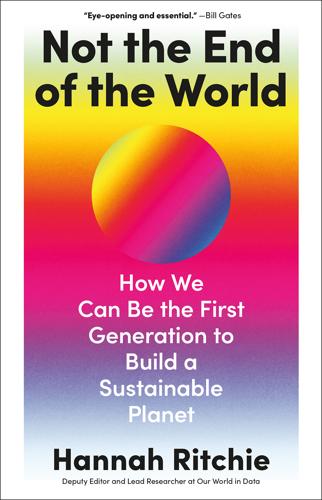
Not the End of the World
by
Hannah Ritchie
Published 9 Jan 2024
His excitement made it hard to pin down his accent but I thought he might be Swedish. ‘And here Africa comes!’ he shouted. The man was Hans Rosling. If you know of him already, you can probably remember the first time you were introduced. If you don’t, I’m a bit jealous: you still have the chance to discover his magic for the first time. Rosling was a Swedish physician, statistician and public speaker. A review of his work in Nature captures him well: ‘Three minutes with Hans Rosling will change your mind about the world.’6 It changed mine. You see, my understanding of the world was wrong. Not just slightly wrong.
…
Many changes that do profoundly shape the world are not rare, exciting or headline-grabbing. They are persistent things that happen day by day and year by year until decades pass and the world has been altered beyond recognition. The only way to really see these changes is to step back and look at the long-run data. This is what Hans Rosling did for social problems. The same is true for our environmental ones. I’ve been researching, writing and shouting about these trends for almost a decade now. I’m Head of Research at Our World in Data, where we do this for every single one of the world’s big problems – from poverty and health to war and climate change.
…
My job is not to do original studies, or to make scientific breakthroughs. It’s to understand what we already know. Or could know if we studied the information we have properly. Then explain it to people: in articles, on the radio, on TV, and in government offices so they can use it to move us forward. Just as Hans Rosling showed that news headlines don’t teach us much about global poverty, education or health, I’ve found that trying to build an environmental world view based on the latest wildfire or hurricane is no good. Trying to understand the world’s energy system and how to fix it from the latest breaking story won’t get us anywhere.
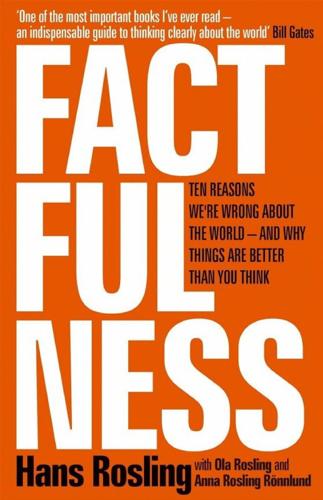
Factfulness: Ten Reasons We're Wrong About the World – and Why Things Are Better Than You Think
by
Hans Rosling
,
Ola Rosling
and
Anna Rosling Rönnlund
Published 2 Apr 2018
“The best stats you’ve ever seen.” Filmed February 2006 in Monterey, CA. TED video, 19:50. https://www.ted.com/talks/hans_rosling_shows_the_best_stats_you_ve_ever_seen gapm.io/xtedros. . “Hans Rosling at World Bank: Open Data.” Filmed May 22, 2010, in Washington, DC. World Bank video, 41:54. https://www.youtube.com/watch?v=5OWhcrjxP-E.gapm.io/xwbros. . “The magic washing machine.” Filmed December 2010 in Washington, DC. TEDWomen video, 9:15. https://www.ted.com/talks/hans_rosling_and_the_magic_washing_machine gapm.io/tedrosWa. Rosling, Hans, Yngve Hofvander, and Ulla-Britt Lithell. “Children’s death and population growth.”
…
About the Author Hans Rosling was a medical doctor, professor of international health, and renowned public educator. He was an adviser to the World Health Organization and UNICEF, and he cofounded Médecins Sans Frontières in Sweden and the Gapminder Foundation. His TED talks have been viewed more than thirty-five million times, and he was listed as one of Time magazine’s one hundred most influential people in the world. Hans died in 2017, having devoted the last years of his life to writing this book. Ola Rosling and Anna Rosling Rönnlund, Hans’s son and daughter-in-law, are cofounders of the Gapminder Foundation, and Ola its director from 2005 to 2007 and from 2010 to the present day.
…
Extreme poverty rate—v1, rough guestimation of extreme poverty rates of all countries for the period 1800 to 2040, based on the Gapminder Income Mountains data set. gapm.io/depov. Gapminder[10]. Household per capita income—v1. gapm.io/ihhinc. Gapminder[11]. “Don’t Panic—End Poverty.” BBC documentary featuring Hans Rosling. Directed by Dan Hillman. Wingspan Productions, September 2015. Gapminder[12]. Legal slavery data—v1. gapm.io/islav. Gapminder[13]. HIV,newly infected—v2. Historic prevalence estimates before 1990 by Linus Bengtsson and Ziad El-Khatib. gapm.io/dhivnew. Gapminder[14]. Death penalty abolishment—v1. gapm.io/ideat.
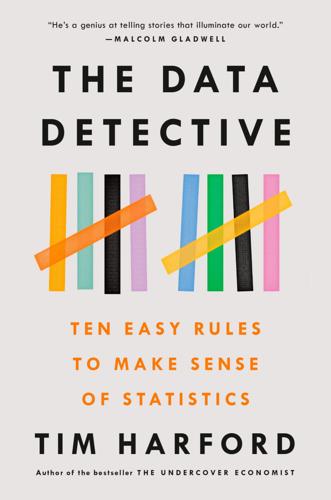
The Data Detective: Ten Easy Rules to Make Sense of Statistics
by
Tim Harford
Published 2 Feb 2021
Ryan Singal, “Netflix Spilled Your Brokeback Mountain Secret, Lawsuit Claims,” Wired, December 17, 2009, https://www.wired.com/2009/12/netflix-privacy-lawsuit/; and Blake Hallinan and Ted Striphas, “Recommended for You: The Netflix Prize and the Production of Algorithmic Culture,” New Media and Society, 2016, https://journals.sagepub.com/doi/pdf/10.1177/1461444814538646. Rule Eight: Don’t Take Statistical Bedrock for Granted 1. This is a translation of a Danish TV interview, discussed in Peter Vinthagen Simpson, “Hans Rosling: ‘You Can’t Trust the Media,’” The Local, September 5, 2015, https://www.thelocal.se/20150905/hans-rosling-you-cant-trust-the-media. 2. Laura Smith, “In 1974, a Stripper Known as the ‘Tidal Basin Bombshell’ Took Down the Most Powerful Man in Washington,” Timeline, September 18, 2017, https://timeline.com/wilbur-mills-tidal-basin-3c29a8b47ad1; Stephen Green and Margot Hornblower, “Mills Admits Being Present during Tidal Basin Scuffle,” Washington Post, October 11, 1974. 3.
…
New York: DC Comics, 1986. 7: Anna Powell-Smith, MissingNumbers.org. 8: 2001: A Space Odyssey (1968), screenplay by Stanley Kubrick and Arthur C. Clarke. 9: Translation of a Danish TV interview, discussed in Peter Vinthagen Simpson, “Hans Rosling: ‘You Can’t Trust the Media,’” The Local, September 5, 2015, https://www.thelocal.se/20150905/hans-rosling-you-cant-trust-the-media. 10: Michael Blastland, personal correspondence, May 13, 2013. 11: Leon Festinger, Henry Riecken, and Stanley Schachter, When Prophecy Fails. New York: Harper Torchbooks, 1956. 12: Orson Welles, remarks to students at the University of California, Los Angeles, 1941.
…
Regardless of where you live, if you’re poor you’re likely to sleep on the floor in the same room as other family members. If you’re rich you’ll have privacy and a comfortable bed. Much of what we think of as cultural differences turn out to be differences in income. “Numbers will never tell the full story of what life on Earth is all about,” wrote Hans Rosling, despite being the world’s most famous statistical guru. (Hans was Anna Rosling Rönnlund’s father-in-law.) Hans was right, of course. Numbers will never tell the full story—which is why, as a doctor and academic, he traveled so widely, and why he so expertly wove stories to go alongside his statistical evidence.
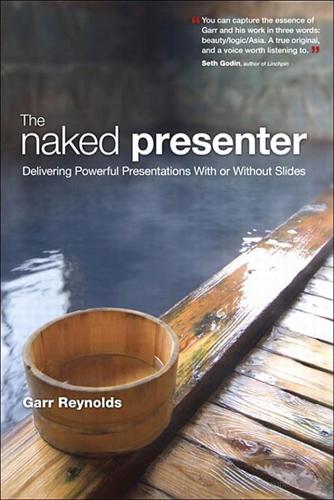
The Naked Presenter: Delivering Powerful Presentations With or Without Slides
by
Garr Reynolds
Published 29 Jan 2010
However, you should also move away from that lectern when you do not have to be there. Hans Rosling, a doctor, researcher, and presenter, is extraordinary at doing this. When he needs to pull up some data or start the Gapminder program, he will occasionally go to his computer on stage. But Rosling also spends a lot of time near or in front of the screen explaining how to read the data or pointing out important points. Rosling is a technical presenter with passion; he is able to engage his audiences with the visualizations of data in part because he removes the barriers by often moving away from the lectern. Hans Rosling removes the barriers and gets involved with the data, making things clear for the audience.
…
eBook <WoweBook.Com> It’s Not the Numbers, It’s What They Mean I’m a huge fan of Hans Rosling, the public health professor from the Karolinska Institutet in Stockholm and one of the cofounders of Gapminder (www.gapminder.org). Rosling is the Zen master of presenting statistics and one of the most popular speakers at TED. Rosling proves what we all know: Statistics are not boring. But Rosling shows that it is not enough just to show data—what matters is the meaning of the data. Statistics tell a story. Photo of Hans Rosling by Stefan Nilsson. The way the Gapminder software displays data is compelling and clarifies the data while bringing the viewer in for a closer look.
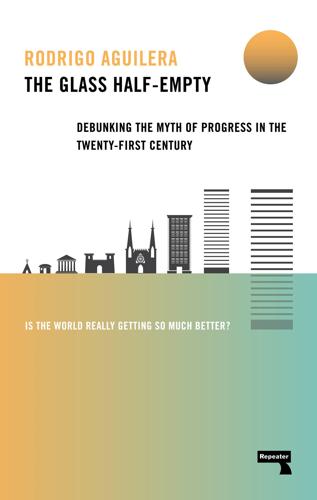
The Glass Half-Empty: Debunking the Myth of Progress in the Twenty-First Century
by
Rodrigo Aguilera
Published 10 Mar 2020
Centrist, liberal magazines like the Economist have also ingratiated themselves into this camp, making deliberate efforts to play down left-wing doom-mongering over capitalism’s shortfalls, particularly since the global financial crisis has made a more absolutist defense of free markets and free enterprise untenable (full disclosure: this author previously worked for The Economist Intelligence Unit, a sister company to the Economist, but which produces its own independent content). Some other characters in this ecosystem are harder to pin down and don’t fall neatly within these two groups. These include the (recently deceased) TED Talk celebrity Hans Rosling, who mastered the art of using charts and other visual aids to seduce his audiences with optimism, or Oxford economist Max Roser, whose website Our World in Data is a statistical mecca for the movement even if Roser hardly proselytizes the narrative himself. He also appears to be the only one who shows any remote concern for issues like inequality and climate change, the former which the other New Optimists consistently play down as either not being an essential component of well-being and the latter as a problem which science will find ways of resolving in due time.
…
When Scottish philosopher David Hume provocatively stated that “tis not contrary to reason [by this meaning rationality] to prefer the destruction of the whole world to the scratching of my finger”,7 he is saying that in purely utilitarian terms, it is possible to prefer a painless alternative (the end of the world) to a painful one (a scratched finger). But this is only a rational choice, not a reasonable one. Only somebody with omnicidal tendencies would feel compelled to do such a thing. Pinker may exalt his Enlightenment heroes with a zeal typically reserved for religious icons, but Hans Rosling, the late Swedish physician-turned-TED Talk star, took the supposedly unobjectionable rationality of optimism to the level of self-help. It’s not enough that facts are good and feelings bad, but that facts are so good that they become feelings themselves. In Factfulness, he appears oblivious to why his corporate audience would feel so giddy at the news that the world is so much better than people think: The basic facts about the world’s progress are so little known that I get invited to talk about them at conferences and corporate meetings all over the world.
…
Optimism has also been related to extended survival time of cancer and AIDS patients.29 Furthermore, it has been suggested that optimism biases may be the few types of misbelief that are evolutionarily adaptive. Psychologist Albert Bandura has argued that “If self-efficacy beliefs always reflected only what people could do routinely, they would rarely fail but they would not mount the extra effort needed to surpass their ordinary performances”.30 Perhaps “factfulness” isn’t as important as Hans Rosling would have us believe. The claim that seeing the glass half-full is advantageous appears to hold true for individuals. But what is good for the individual does not necessarily translate into something good for society. Societies, after all, do not suffer from mental health conditions that benefit from a dose of optimistic self-delusion.
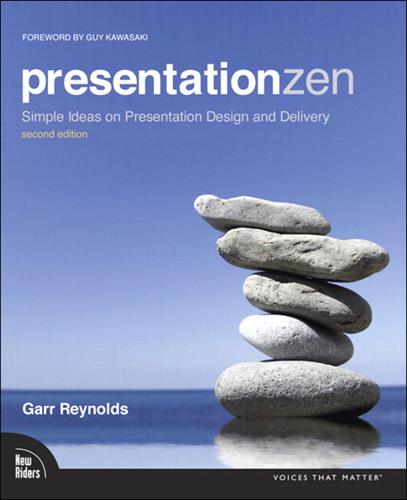
Presentation Zen
by
Garr Reynolds
Published 15 Jan 2012
Curiosity is Infectious A good example of a person who presents important information with an infectious sense of curiosity and wonder is Swedish medical doctor Hans Rosling. Yes, Hans’s Gapminder-powered data visualizations are very compelling on stage. However, he shows his passionate curiosity and engages his audiences by the way he speaks, with exclamations such as: Do you see that? Look here! This is amazing! What do you think happens next? Wasn’t that surprising? This is the kind of language that engages the listener. Hans Rosling brings the data alive through visualizations, and taps people’s emotions by putting the information in the context of a story, making it accessible to all who will listen.
…
The TED website is a great resource for content and for those interested in watching good presentations, often with good use of multimedia. www.ted.com/talks Al Gore TOP (TED/leslieimage.com) William McDonough CENTER (TED/Asa Mathat) Sir Ken Robinson BOTTOM (TED/leslieimage.com) * * * * * * Stand, Deliver, Connect Hans Rosling (right), a professor of global health at Sweden’s Karolinska Institute, is the Zen master of presenting statistics that have meaning and tell a story. Rosling co-developed the software behind his visualizations through his nonprofit Gapminder. Using U.N. statistics, Rosling shows that it is indeed a different world.
…
Conventional wisdom says to never stand between the screen and the projector, which is generally good advice. But as you can see from the photo here, Rosling at times defies conventional wisdom and gets involved with the data in an energetic way that engages his audience with the data and the story. Hans Rosling (TED/leslieimage.com) Other TED presenters on this page demonstrate the importance of standing front and center and connecting with the audience. June Cohen (TED/leslieimage.com) Lawrence Lessig (TED/leslieimage.com) John Doerr (TED/leslieimage.com) Carolyn Porco (TED/leslieimage.com) * * * Hara Hachi Bu: Why Length Matters A consequence of Zen practice is increased attentiveness to the present, a calmness, and an ability to focus on the here and now.
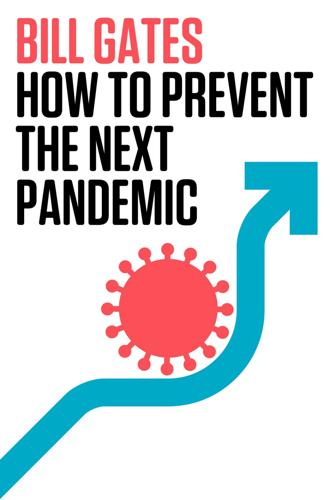
How to Prevent the Next Pandemic
by
Bill Gates
Published 2 May 2022
And when there are market failures—when the people who most need lifesaving tools can’t afford them—then governments, nonprofits, and foundations should step in to fill the gap, often by finding the right way to work with the private sector. We can do better next time—if we start taking pandemic preparation seriously. The world responded to COVID faster and more effectively than to any other disease in history. But as the late educator and physician Hans Rosling put it, “Things can be better and bad.” In the Better column, for example, I’d put the fact that the world developed safe, effective vaccines in record time. In the Bad column, I’d put the fact that too few people in poor countries are getting them. I’ll return to this problem in Chapter 8. Another entry in the Bad column so far: the world’s failure to get serious about preparing for and trying to prevent pandemics.
…
It’s another challenge entirely to avoid creating a system of vaccine haves and have-nots—to make and distribute enough doses to quickly reach everyone who needs them, including people in low-income countries who have a high risk of getting severely sick. The distribution of COVID vaccines in 2020 and 2021 was, to quote Hans Rosling again, both bad and better. Vaccines reached more people faster than any other vaccination effort ever. They also reached many people in poor countries faster than ever—but not fast enough. So we’ll look at ways to distribute vaccines more fairly. In the U.S., people lined up in cars at predetermined locations to get their vaccines, while many people in rural parts of low- and middle-income countries had to wait for limited doses to be delivered on foot.
…
It just seems like common sense that if more children survive, the global population will increase faster. In fact, I used to worry about this problem myself. But I was wrong. The answer is, emphatically and without a doubt, no—lower rates of child mortality do not lead to overpopulation. The best explanation of why this is true was given by my friend Hans Rosling. I first became aware of Hans when he gave an unforgettable TED talk in 2006 called “The Best Stats You’ve Ever Seen.”[*3] Hans had spent decades working in public health, with a focus on poor countries, and he used his talk to share some surprising facts about how health was improving around the world.
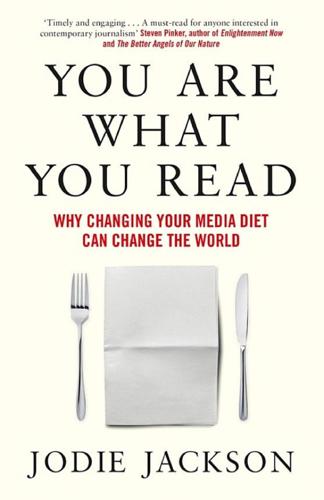
You Are What You Read
by
Jodie Jackson
Published 3 Apr 2019
It is because these three criteria have come to dominate the way in which most news stories are created that our thinking about the state of the world has become distorted. The prevalence and pursuit of extraordinarily negative stories in the press can give the appearance that we are going backwards, and most of us are left believing that the world is getting worse. Hans Rosling, a Swedish statistician and renowned public speaker, founded an organisation called Gapminder with his son Ola Rosling and Ola’s wife Anna, which addresses the negative news bias. In Hans’ inspiring and insightful TED Talk ‘The best stats you’ve ever seen’, he shares the results of an original study he conducted among Swedish university students called ‘the chimpanzee test’.10 In this experiment, he offered the students five pairs of countries, consisting of one Asian country and one European country, and asked them to select which performed better on a number of health measures, such as child mortality rates.
…
, The International Journal of Press/Politics, 12, 2007, pp. 24–43. 6 Althaus, S., Edy, J., Entman, R. and Phalen, P., ‘Revising the indexing hypothesis: Officials, media, and the Libya crisis’, Political Communication, 13(4), 1996, pp. 407–21. 7 Dor, D., ‘On newspaper headlines as relevance optimizers’, Journal of Pragmatics, 35(5), 2003, pp. 695–721. 8 Association for Safe International Road Travel, 2018, Road Safety Facts, available at: https://www.asirt.org/road-safety-facts/ 9 ASN News, 2018, ‘ASN data show 2017 was safest year in aviation history’, available at: https://news.aviation-safety.net/2017/12/30/preliminary-asn-data-show-2017-safest-year-aviation-history/ 10 Rosling, H., ‘The best stats you’ve ever seen’, Ted.com, 2018, available at: https://www.ted.com/talks/hans_rosling_shows_the_best_stats_you_ve_ever_seen 11 Patterson, T., The Vanishing Voter, Vintage, New York, 2003, p. 93. BAD NEWS SELLS Bad news sells because the amygdala is always looking for something to fear. — Peter H. Diamandis Negative news reporting and highlighting problems is vital in helping society improve.
…
Media Books: The Better Angels of Our Nature: A History of Violence and Humanity by Steven Pinker Breaking News: The Remaking of Journalism and Why It Matters Now by Alan Rusbridger Broadcasting Happiness: The Science of Igniting and Sustaining Positive Change by Michelle Gielan Enlightenment Now: The Case for Reason, Science, Humanism and Progress by Steven Pinker Factfulness: Ten Reasons We’re Wrong About the World – And Why Things Are Better Than You Think by Hans Rosling, with Ola Rosling and Anna Rosling Rönnlund A Force for Good: How the American News Media Have Propelled Positive Change by Rodger Streitmatter The Information Diet: A Case for Conscious Consumption by Clay A. Johnson It’s Better Than It Looks: Reasons for Optimism in an Age of Fear by Gregg Easterbrook Journalism of Outrage: Investigative Reporting and Agenda Building in America by David L.

Shorting the Grid: The Hidden Fragility of Our Electric Grid
by
Meredith. Angwin
Published 18 Oct 2020
Rosen, “Inside the Haywire World of Beirut’s Electricity Brokers,” Wired, August 29, 2018, https://www.wired.com/story/beruit-electricity-brokers/. 230 Robert Bryce, A Question of Power: Electricity and the Wealth of Nations, Public Affairs, March 10, 2020, https://www.amazon.com/Question-Power-Electricity-Wealth-Nations/dp/1610397495. 231 Gayathri Vaidyanathan, “Coal Trumps Solar in India,” ClimateWire, October 19, 2015; reprinted in Scientific American, https://www.scientificamerican.com/article/coal-trumps-solar-in-india/#googDisableSync/. 232 Hans Rosling, “The magic washing machine” (video), TED, December 2010, https://www.ted.com/talks/hans_rosling_and_the_magic_washing_machine?language=en. 233 https://www.iso-ne.com/committees/industry-collaborations/consumer-liaison. 234 “Consumer Liaison Group Meeting Summary: December 6, 2018,” ISO-NE, undated, https://www.iso-ne.com/static-assets/documents/2018/12/clg_meeting_summary_december_6_2018_final.pdf. 235 “Consumer Liaison Group Meeting Summary: September 20, 2018,” ISO-NE, undated, https://www.iso-ne.com/static-assets/documents/2018/10/clg_meeting_summary_september_20_2018_final.pdf. 236 List of countries by electricity consumption, Wikipedia, updated April 6, 2020 https://en.wikipedia.org/wiki/List_of_countries_by_electricity_consumption 237 Reuters, “Germany to phase out coal by 2038 in move away from fossil fuels,” CNBC (website), January 26, 2019, https://www.cnbc.com/2019/01/26/germany-to-phase-out-coal-by-2038-in-move-away-from-fossil-fuels.html. 238 Joshua S.
…
People want the lights to go on. The title of Gayathri Vaidyanathan’s article in Scientific American says it all: “Coal Trumps Solar in India.” If wealthy people feel that they need to encourage very poor people not to use coal—well, those wealthy people are going to have a problem. I would recommend that they watch Hans Rosling’s wonderful video “The Magic Washing Machine,” about the different types of energy poverty.232 When you have enough electricity to run a washing machine, women become empowered. When you can run a washing machine, you have “real electricity.” And you are probably connected to the grid. Climate justice SO FAR, IN AMERICA, our distributed generation is backed up by a robust electric grid, rather than by freelance brokers.
…
Remember the young man in India who wanted to study in the early-morning hours before he had to go to the fields? He wanted a better life for himself, and good lighting (energy use) was going to help him achieve it. A fragile grid (sorry, no electricity early in the morning) could not help him achieve his goals. (See chapter 37 on Distributed Generation.) In his amazing book, Factfulness, Hans Rosling and his son and daughter-in-law trace the various levels of poverty and energy poverty. It shows how people’s lives get better as prosperity increases.277 Bill Gates said about this book: “One of the most important books I have ever read—an indispensable guide for thinking clearly about the world.”
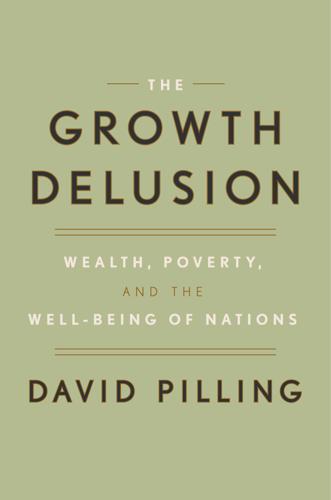
The Growth Delusion: Wealth, Poverty, and the Well-Being of Nations
by
David Pilling
Published 30 Jan 2018
Even those who have not yet clawed their way on to the bottom rung of the aspirational ladder have seen what it looks like, courtesy of the satellite television channels that beam images of a middle-class life into even the most benighted corners of the country.”14 Many Indians had graduated from what one economist called a “petitioning class” into an aspirational one.15 India’s elite had failed to grasp the changes that fifteen years of growth had wrought. It was Modi who saw how alluring and transformative economic growth could be. * * * — Not too long before he died in February 2017, I discussed the issue of growth in poor countries with Hans Rosling, a Swedish academic. Rosling was that rarest of things, a pop-star statistician.16 A master of the TED talk—in which he used dynamic bubble charts to present data, which he pointed to with a rubber hand attached to the end of a long stick—Rosling was a self-described “edutainer.” Although he objected to the term, he was also an optimist.17 He believed that poor countries were gradually closing the gap on rich Western ones, a trend that was most discernible in basic health data such as infant mortality.
…
For McGuire the GPI is an off-the-shelf index with a venerable history. Yet the right-wing nut job made a valid point. It is one we need to consider carefully when weighing up the pluses and minuses of indexes. Because the thing about an index is that you can put in it almost anything that takes your fancy. It is what Hans Rosling, the Swedish statistician, calls “GDP in the age of Excel.” Almost everything in the GPI is a value judgment. Booze is an example. Alcohol in moderation is counted as a positive expenditure. Who doesn’t like a glass of red wine or a beer after work? But anything above what is considered reasonable consumption is deducted from the GPI, which subtracts money spent on “binge drinking.”
…
Amartya Sen, “Bangladesh Ahead of India in Social Indicators,” Daily Star, February 13, 2015: www.thedailystar.net. 14. David Pilling, “India’s Congress Party Has Done Itself Out of a Job,” Financial Times, May 7, 2014: www.ft.com. 15. Rajiv Kumar of the Centre for Policy Research, Delhi. 16. Sam Roberts, “Hans Rosling, Swedish Doctor and Pop-Star Statistician, Dies at 68,” New York Times, February 9, 2017. 17. He objected because he said his observations were based merely on data. 18. When I asked him about the other 20 percent, he said, “That’s why we have public health. That’s the reason for my existence.” 19.

Presentation Zen Design: Simple Design Principles and Techniques to Enhance Your Presentations
by
Garr Reynolds
Published 14 Aug 2010
Which graph makes it easier to determine R&D’s travel expense? 8. In which graph are the labels easier to read? 9. Which graph is easier to look at? 10. Which table allows you to see the areas of poor performance more quickly? The Future of Data Presentation One of the masters of displaying data during live presentations is Hans Rosling, a public health professor from the Karolinska Institutet in Stockholm, Sweden. With his amazing ability to unveil the beauty of statistics, Rosling has become a bit of a super star. His talks during the annual Technology, Entertainment, Design (TED) Conferences have been seen online millions of times.
…
The data, he says, are like musical notes that must be played to be truly appreciated. ...few people will appreciate the music if I just show them the notes. Most of us need to listen to the music to understand how beautiful it is. But often that’s how we present statistics: we just show the notes, we don’t play the music. Hans Rosling gets involved with the data at TED 09 in Long Beach, California. Let your data speak As a presenter, what sets Rosling apart is his animation of the data. Before Gapminder, he had been using data and playing it beautifully—in fact, he was a bit of a hero in his own academic community. But it was the Gapminder software that allowed him to really connect with people—to reveal the meaning of data and tell a story to the greater public.
…
What was missing before was the “instrument of playing,” says Rosling. Gapminder, which allows for complex animation, provides that instrument. “In statistics we need the composers, we need people who make the instruments, and we need those who play.” Gapminder was founded in Stockholm by Ola Rosling, Anna Rosling Rönnlund and Hans Rosling in early 2005. Trendalyzer, the Gapminder software, makes it possible to unveil the beauty of a statistical time series by converting “boring numbers” into engaging, animated, and interactive graphics. You can use the online Trendalyzer software in the form of Gapminder World, a Web service that displays a time series of development statistics for all countries (Google acquired Trendalyzer from the Gapminder Foundation in 2006).
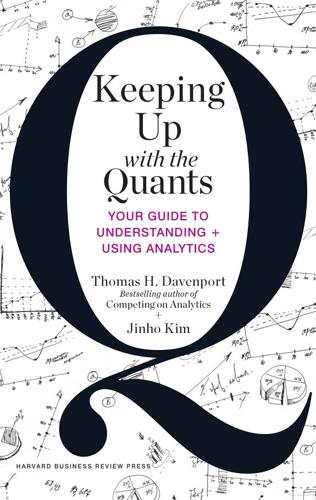
Keeping Up With the Quants: Your Guide to Understanding and Using Analytics
by
Thomas H. Davenport
and
Jinho Kim
Published 10 Jun 2013
This list was adapted and modified from one on the IBM ManyEyes site; see http://www-958.ibm.com/software/data/cognos/manyeyes/page/Visualization_Options.html. 7. This example is from the SAS Visual Analytics 5.1 User’s Guide, “Working with Automatic Charts,” http://support.sas.com/documentation/cdl/en/vaug/65384/ HTML/default/viewer.htm#n1xa25dv4fiyz6n1etsfkbz75ai0.htm. 8. Hans Rosling, “Stats That Reshape Your Worldview,” TED talk, February 2006, http://www.ted.com/talks/hans_rosling_shows_the_best_stats_you_ve_ever_seen.html. 9. While Schmitt’s group sometimes creates such videos in-house, this one was done by an external production company. 10. James Taylor, “Decision Management Systems: A Practical Guide to Using Business Rules and Predictive Analytics,” IBM Press, 2011. 11.
…
If the data includes, for example, “One date/time category and any number of other categories or measures,” the program will automatically generate a line chart.7 * * * Purposes and Types of Visual Analytics IF YOU WANT TO: See relationships among data points: Scatterplot: Shows the relationship between two variables on a two-dimensional grid Matrix plot: For showing relationships and frequencies for hierarchical variables Heat map: Individual values contained in a matrix are represented as colors Network diagram: Shows relationships between entities and the strengths of the paths between them Compare a set of frequencies or values, typically for one variable: Bar chart: Length of bar represents values Histogram: Type of bar chart with bars showing frequencies of data at specified intervals Bubble chart: Displays a set of numeric values as circles, with the size of the circle corresponding to the value Show the rise and fall of one variable in relation to another (typically time): Line graph: Two-dimensional graph, typically with one variable or multiple variables with standardized data values Stack graph: Line graph with filled-in areas underneath the graph, typically showing change in multiple variables; can also show change in multiple categories with different colors See the parts of a whole and how they relate to each other: Pie chart: Displays distribution of values in one variable in a pie format; percentages of each value correspond to size of slices Tree map: Visual for showing the size of values in a hierarchical variable, such as world/continents/countries/population in each country Understand data across geography: Overlaying summarized data onto geographical maps with colors, bubbles, or spikes representing different values Analyzing text frequencies: Tag cloud: A visualization of word frequencies; more frequently used words are displayed in larger type Phrase net: Shows frequencies of combinations of words used together; more frequently used words are displayed in larger type * * * The types of visual analytics listed in the worksheet are static, but visual analytics are increasingly becoming dynamic and interactive. Swedish professor Hans Rosling popularized this approach with his frequently viewed TED Talk, which used visual analytics to show the changing population health relationships between developed and developing nations over time.8 Rosling has created a website called Gapminder (www.gapminder.org) that displays many of these types of interactive visual analytics.
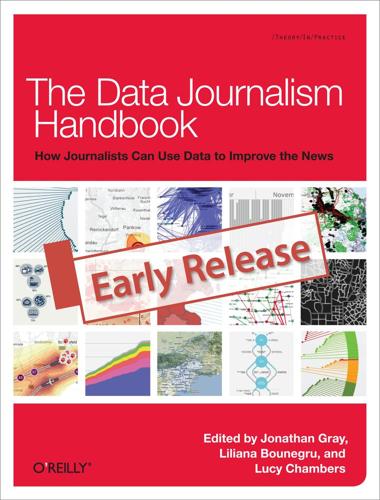
The Data Journalism Handbook
by
Jonathan Gray
,
Lucy Chambers
and
Liliana Bounegru
Published 9 May 2012
Or using software to find connections between hundreds of thousands of documents, as The Telegraph did with MPs’ expenses (http://tgr.ph/mps-expenses). Figure 1-1. Investigate your MP’s expenses (the Guardian) Data journalism can help a journalist tell a complex story through engaging infographics. For example, Hans Rosling’s spectacular talks on visualizing world poverty with Gapminder have attracted millions of views across the world. And David McCandless’ popular work in distilling big numbers—such as putting public spending into context, or the pollution generated and prevented by the Icelandic volcano—shows the importance of clear design at Information is Beautiful.
…
Bad data visualization is worse in many respects than none at all. — Aron Pilhofer, New York Times Using Motion Graphics With a tight script, well-timed animations, and clear explanations, motion graphics can serve to bring complex numbers or ideas to life, guiding your audience through the story. Hans Rosling’s video lectures are a good example of how data can come to life to tell a story on the screen. Whether or not you agree with their methodology, I also think the Economist’s Shoe-throwers’ index is a good example of using video to tell a numbers-based story. You wouldn’t, or shouldn’t, present this graphic as a static image.
…
UK government spending and taxation (the Guardian) After something simple (like a bar or line chart, or a pie chart), you’ll find that Google spreadsheets (which you create from the documents bit of your Google account) can create some pretty nice charts—including the animated bubbles used by Hans Rosling’s Gapminder. Unlike the charts API, you don’t need to worry about code; it’s pretty similar to making a chart in Excel, in that you highlight the data and click the chart widget. The customization options are worth exploring too; you can change colors, headings, and scales. They are pretty design-neutral, which is useful in small charts.

Progress: Ten Reasons to Look Forward to the Future
by
Johan Norberg
Published 31 Aug 2016
Boulder, CO: Westview Press, 1996, p. 56. 40 ‘Xiaogang Village, birthplace of rural reform, moves on’, China Development Gateway, 16 December 2008, http://en.chinagate.cn/features/rural_poverty/2008-12/16/content_16966805.htm (accessed on 21 March 2016). 2 Sanitation 1 G. K. Chesterton, The Man Who Was Thursday. New York: Barnes & Noble, 2004, p. 5. 2 Ann Lindstrand, Staffan Bergström, Hans Rosling, Birgitta Rubenson, Bo Stenson and Thorild Tylleskär, Global Health: An Introductory Textbook. Lund: Studentlitteratur, 2006, p. 77. 3 WHO, The World Health Report 1995: Bridging the Future. Geneva: WHO, 1995; WHO and UNICEF, Progress on Sanitation and Drinking Water: 2015 Update and MDG Assessment.
…
1 George Thomas White Patrick, ‘The new optimism’, Popular Science Monthly (May 1913), p. 493. 2 Bailey 2015, p. xvii. 3 Melanie Randle and Richard Eckersley, ‘Public perceptions of future threats to humanity and different societal responses: a cross-national study’, Futures, 72 (2015), 4–16. 4 Johan Norberg, ‘Rubriker som gör oss rädda’. Timbro, 2005. 5 Hans Rosling, ‘Highlights from Ignorance Survey in the UK’, 3 November 2013, http://www.gapminder.org/news/highlights-from-ignorance-survey-in-the-uk (accessed on 22 March 2016); Gapminder, ‘The Ignorance Survey: United States’, 2013, http://www.gapminder.org/GapminderMedia/wp-uploads/Results-from-the-Ignorance-Survey-in-the-US.pdf (accessed on 12 April 2016). 6 Mark Crispin Miller, ‘It’s a crime: the economic impact of the local TV news’.
…
Since I started writing about globalisation and development in 2001, I have been lucky to come across, meet with and learn from several thinkers who have tirelessly presented the case that humanity solves more problems than it creates, when it gets the freedom to do so. This group includes – but is far from limited to – Ronald Bailey, Lasse Berg, Anders Bolling, Angus Deaton, Robert Fogel, Indur Goklany, Charles Kenny, Deepak Lal, Bjørn Lomborg, Deirdre McCloskey, Joel Mokyr, Steven Pinker, Matt Ridley, Max Roser, Hans Rosling, Michael Shermer and Marian Tupy. And above all, I am indebted to Julian Simon, the grand old man of development optimism. Their common denominator is not political or even philosophical, but methodological. They look at the whole building rather than just one brick, long data series rather than anecdotes.
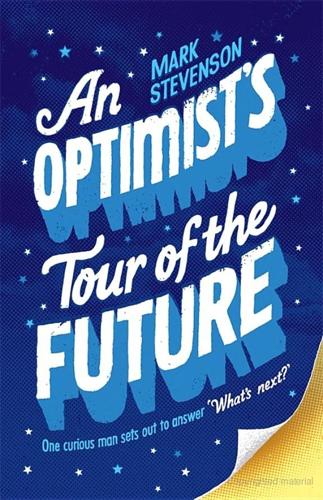
An Optimist's Tour of the Future
by
Mark Stevenson
Published 4 Dec 2010
The big worry is that the effects of global warming will greatly reduce our capacity to grow food as crops wither under the onslaught of rising temperatures, which is why what Bruce and Tony are doing in Australia could be staggeringly important. Ironically, one way to continue to increase food production in a sustainable way could be to return to ancient practices. But can we continue to raise food production ad infinitum as our population continues to grow? The good news is we won’t have to. The statistician Hans Rosling from Sweden’s Karolinska Institute tells a story of how many of his students wonder if keeping the poor alive is really such a good idea. ‘In a time when we know the pressures on the environment are growing, my students tell me “population growth destroys the environment so poor children may as well die.”
…
A recent New York Times piece by Elisabeth Rosenthal, entitled ‘New Jungles Prompt a Debate on Rain Forests,’ went so far as to suggest that for every acre of rainforest being cut down, over fifty acres of secondary forest are regrowing. That’s pretty incredible, don’t you think? It is, however, important to stress that re-grown secondary forest in no way matches up to the biodiversity lost when ancient rainforests are destroyed. This teeming metropolis I’m walking through is therefore an engine of renewal. Hans Rosling’s students are dead wrong. Those ‘poor children’ must live, move to the city and prosper – and in doing so they will, in just a few generations, stabilise the world populace while allowing many ecosystems to flourish. It’s a nice thought to have as the sun sets on the Indian Ocean. The next morning brings fresh disappointment.
…
TED ideas are by turns so mind-bending, hopeful, scary and entertaining that they demand to be shared. Mixing the most radical ideas with a short format means speakers need to hone their presentations, and because the Internet audience is millions there is no room for academic long-windedness. In 2007, statistician Hans Rosling (whose thoughts on population I’d considered while walking the packed streets of Malé) delivered a blistering attack on the concept of ‘developed’ versus ‘developing’ nations … and then he swallowed a sword, because sword swallowing is ‘a cultural expression that for thousands of years has inspired human beings to think beyond the obvious.’
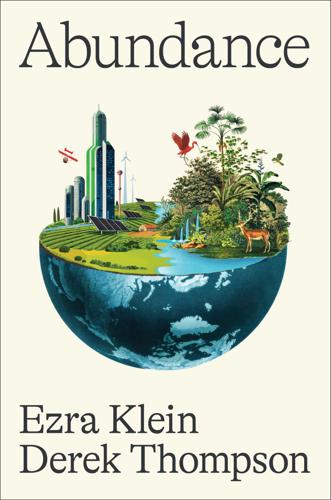
Abundance
by
Ezra Klein
and
Derek Thompson
Published 18 Mar 2025
Thomas Jefferson to Thomas Mann Randolph, November 28, 1796, Monticello, https://www.monticello.org/exhibits-events/blog/i-shudder-at-the-approach-jefferson-on-winter/; Thomas Jefferson to “Mr. Volney,” January 8, 1797, National Archives, https://founders.archives.gov/documents/Jefferson/01-29-02-0202. 13. Hans Rosling, “The Magic Washing Machine,” TEDWomen 2010, December 2010, https://www.ted.com/talks/hans_rosling_the_magic_washing_machine/transcript?subtitle=en. 14. Hannah Ritchie, “What the History of London’s Air Pollution Can Tell Us About the Future of Today’s Growing Megacities,” Our World in Data,” June 20, 2017, https://ourworldindata.org/london-air-pollution. 15.
…
A hundred years later, Thomas Jefferson had a vast wine collection and library in Monticello and the forced labor of more than a hundred slaves,11 but his ink still froze to the tip of his pen during winter.12 Today, heating is a solved problem for many. But not for all. There are few inequalities more fundamental than energy inequality. The late demographer Hans Rosling had a vivid way of framing this. In 2010, he argued that you could group humanity by the energy people had access to. At the time, roughly 2 billion people had little or no access to electricity and still cooked food and heated water by fire. About 3 billion had access to enough electricity to power electric lights.

Enlightenment Now: The Case for Reason, Science, Humanism, and Progress
by
Steven Pinker
Published 13 Feb 2018
* * * The sociologist Robert Merton identified Communalism as a cardinal scientific virtue, together with Universalism, Disinterestedness, and Organized Skepticism: CUDOS.2 Kudos indeed goes to the many scientists who shared their data in a communal spirit and responded to my queries thoroughly and swiftly. First among these is Max Roser, proprietor of the mind-expanding Our World in Data Web site, whose insight and generosity were indispensable to many discussions in part II, the section on progress. I am grateful as well to Marian Tupy of HumanProgress and to Ola Rosling and Hans Rosling of Gapminder, two other invaluable resources for understanding the state of humanity. Hans was an inspiration, and his death in 2017 a tragedy for those who are committed to reason, science, humanism, and progress. My gratitude goes as well to the other data scientists I pestered and to the institutions that collect and maintain their data: Karlyn Bowman, Daniel Cox (PRRI), Tamar Epner (Social Progress Index), Christopher Fariss, Chelsea Follett (HumanProgress), Andrew Gelman, Yair Ghitza, April Ingram (Science Heroes), Jill Janocha (Bureau of Labor Statistics), Gayle Kelch (US Fire Administration/FEMA), Alaina Kolosh (National Safety Council), Kalev Leetaru (Global Database of Events, Language, and Tone), Monty Marshall (Polity Project), Bruce Meyer, Branko Milanović (World Bank), Robert Muggah (Homicide Monitor), Pippa Norris (World Values Survey), Thomas Olshanski (US Fire Administration/FEMA), Amy Pearce (Science Heroes), Mark Perry, Therese Pettersson (Uppsala Conflict Data Program), Leandro Prados de la Escosura, Stephen Radelet, Auke Rijpma (OECD Clio Infra), Hannah Ritchie (Our World in Data), Seth Stephens-Davidowitz (Google Trends), James X.
…
Here is a second shocker: Almost no one knows about it. Information about human progress, though absent from major news outlets and intellectual forums, is easy enough to find. The data are not entombed in dry reports but are displayed in gorgeous Web sites, particularly Max Roser’s Our World in Data, Marian Tupy’s HumanProgress, and Hans Rosling’s Gapminder. (Rosling learned that not even swallowing a sword during a 2007 TED talk was enough to get the world’s attention.) The case has been made in beautifully written books, some by Nobel laureates, which flaunt the news in their titles—Progress, The Progress Paradox, Infinite Progress, The Infinite Resource, The Rational Optimist, The Case for Rational Optimism, Utopia for Realists, Mass Flourishing, Abundance, The Improving State of the World, Getting Better, The End of Doom, The Moral Arc, The Big Ratchet, The Great Escape, The Great Surge, The Great Convergence.32 (None was recognized with a major prize, but over the period in which they appeared, Pulitzers in nonfiction were given to four books on genocide, three on terrorism, two on cancer, two on racism, and one on extinction.)
…
Bear in mind that the global average is dragged down by the premature deaths from hunger and disease in the populous countries in the developing world, particularly by the deaths of infants, who mix a lot of zeroes into the average. The answer for 2015 is 71.4 years.1 How close is that to your guess? In a recent survey Hans Rosling found that less than one in four Swedes guessed that it was that high, a finding consistent with the results of other multinational surveys of opinions on longevity, literacy, and poverty in what Rosling dubbed the Ignorance Project. The logo of the project is a chimpanzee, because, as Rosling explained, “If for each question I wrote the alternatives on bananas, and asked chimpanzees in the zoo to pick the right answers, they’d have done better than the respondents.”
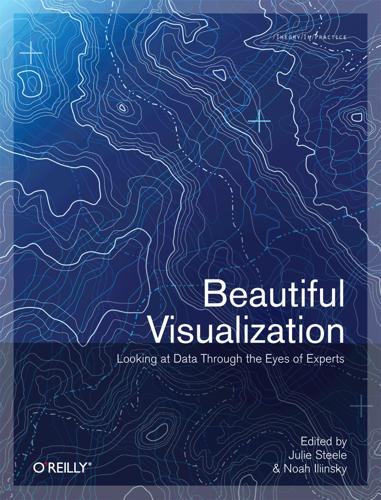
Beautiful Visualization
by
Julie Steele
Published 20 Apr 2010
Some animations can enhance the visual appeal of the visualization being presented, but may make exploration of the dataset more difficult; other animated visualizations facilitate exploration. This chapter attempts to work out a framework for designing effective animated visualizations. We’ll begin by looking at some background material, and then move on to a discussion of one of the most well-known animated visualizations, Hans Rosling’s GapMinder. One of the projects I worked on explored animated scatterplots like GapMinder; this makes a fine launching point to discuss both successes and failures with animation. As we’ll see, successful animations can display a variety of types of transformations. The DynaVis project helps illustrate how some of these transitions and transformations can work out.
…
Visualization was most helpful when accompanied by constructivist theories—that is, when students manipulated code or algorithms and watched a visualization that illustrated their own work, or when students were asked questions and tried to use the visualization to answer them. In contrast, animations were ineffective at transferring knowledge; passively watching an animation was not more effective than other forms of teaching. GapMinder and Animated Scatterplots One recent example of successful animated visualization comes from Hans Rosling’s GapMinder (http://www.gapminder.org). Rosling is a professor of Global Health from Sweden, and his talk at the February 2006 Technology, Entertainment, Design (TED) conference[1] riveted first a live audience, then many more online. He collected public health statistics from international sources and, in his brief talk, plotted them on a scatterplot.
…
Washington, DC: IEEE Computer Society. Zongker, Douglas E., and David H. Salesin. 2003. ‚ÄúOn creating animated presentations.‚Äù In Proceedings of the 2003 ACM SIGGRAPH/Eurographics Symposium on Computer Animation. New York: ACM Press. [1] Available online at http://www.ted.com/talks/hans_rosling_shows_the_best_stats_you_ve_ever_seen.html. Rosling presented similar discussions at TED 2007 and TED 2009. Chapter Twenty Visualization: Indexed. Jessica Hagy Visualization: It’s an Elephant. Visualization. To one person, it’s charts and graphs and ROI. To another, it’s illustration and colorful metaphor and gallery openings.
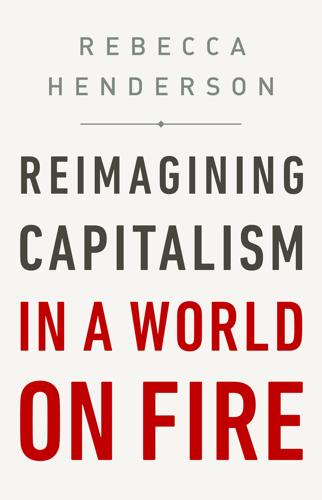
Reimagining Capitalism in a World on Fire
by
Rebecca Henderson
Published 27 Apr 2020
Brondizio, H. T. Ngo, M. Guèze, J. Agard, A. Arneth, et al., eds., “Summary for Policymakers of the Global Assessment Report on Biodiversity and Ecosystem Services of the Intergovernmental Science-Policy Platform on Biodiversity and Ecosystem Services” (Bonn, Germany: IPBES Secretariat, 2019). 6. Hans Rosling, Ola Rosling, and Anna Rosling Rönnlund, Factfulness: Ten Reasons We’re Wrong About the World—and Why Things Are Better Than You Think, 1st ed. (New York, Flatiron Books, 2018). 7. WHO, “World Bank and WHO: Half the World Lacks Access to Essential Health Services, 100 Million Still Pushed into Extreme Poverty Because of Health Expenses,” Dec. 13, 2017, www.who.int/news-room/detail/13-12-2017-world-bank-and-who-half-the-world-lacks-access-to-essential-health-services-100-million-still-pushed-into-extreme-poverty-because-of-health-expenses; Kate Hodal, “Hundreds of Millions of Children in School but Not Learning,” Guardian, Feb. 2, 2018, www.theguardian.com/global-development/2018/feb/02/hundreds-of-millions-of-children-in-school-but-not-learning-world-bank; United Nations, “Lack of Quality Opportunities Stalling Young People’s Quest for Decent Work—UN Report / UN News,” Nov. 21, 2017, https://news.un.org/en/story/2017/11/636812-lack-quality-opportunities-stalling-young-peoples-quest-decent-work-un-report; James Manyika et al., “Jobs Lost, Jobs Gained: Workforce Transitions in a Time of Automation,” McKinsey Global Institute (2017). 8.
…
CEMEX Annual Report, 2018, www.cemex.com/investors/reports/hom#navigate. 36. Climate Change, Marks and Spencer, https://corporate.marksandspencer.com/sustainability/business-wide/climate-change. 37. Key Facts, Marks and Spencer, https://corporate.marksandspencer.com/investors/key-facts. 38. Hans Rosling et al., Factfulness. 39. Alvaredo et al., World Inequality Report 2018. 40. Raj Chetty, “Improving Opportunities for Economic Mobility: New Evidence and Policy Lessons,” Bridges (Fall 2016). 41. Raj Chetty et al., Mobility Report Cards: The Role of Colleges in Intergenerational Mobility, NBER Working Paper no. w23618 (Cambridge, MA: National Bureau of Economic Research, 2017). 42.
…
Human Development Indices and Indicators: 2018 Statistical Update (Mauritius: UNDP, 2018), http://hdr.undp.org/sites/all/themes/hdr_theme/country-notes/MUS.pdf. 93. My sources for what follows are a personal interview with Daniella conducted in August 2018, my personal experience, and Leadership Now’s website. I am on the Advisory Board of the organization. Chapter 8. Pebbles in an Avalanche of Change 1. Hans Rosling, Ola Rosling, and Anna Rosling Rönnlund, Factfulness: Ten Reasons We’re Wrong About the World—and Why Things Are Better Than You Think, 1st ed. (New York: Flatiron Books, 2018), 33. 2. K. Danziger, “Ideology and Utopia in South Africa: A Methodological Contribution to the Sociology of Knowledge,” British Journal of Sociology 14, no. 1 (1963): 59–76. 3.
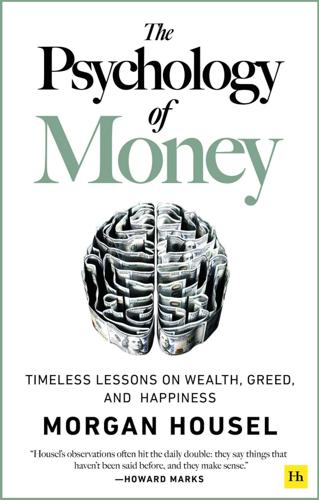
The Psychology of Money: Timeless Lessons on Wealth, Greed, and Happiness
by
Morgan Housel
Published 7 Sep 2020
The simple idea that most people wake up in the morning trying to make things a little better and more productive than wake up looking to cause trouble is the foundation of optimism. It’s not complicated. It’s not guaranteed, either. It’s just the most reasonable bet for most people, most of the time. The late statistician Hans Rosling put it differently: “I am not an optimist. I am a very serious possibilist.” Now we can discuss optimism’s more compelling sibling: pessimism. December 29th, 2008. The worst year for the economy in modern history is about to close. Stock markets around the world had collapsed. The global financial system was on day-to-day life support.
…
If, on the other hand, you say catastrophe is imminent, you may expect a McArthur genius award or even the Nobel Peace Prize. In my own adult lifetime ... the fashionable reasons for pessimism changed, but the pessimism was constant. “Every group of people I ask thinks the world is more frightening, more violent, and more hopeless—in short, more dramatic—than it really is,” Hans Rosling wrote in his book Factfulness. When you realize how much progress humans can make during a lifetime in everything from economic growth to medical breakthroughs to stock market gains to social equality, you would think optimism would gain more attention than pessimism. And yet. The intellectual allure of pessimism has been known for ages.

The Measure of Progress: Counting What Really Matters
by
Diane Coyle
Published 15 Apr 2025
: sleep therefore does not count, nor taking a shower. The failure to account in any way for home production—for all the difficulties of valuing or assigning a shadow price to it—means the importance of innovation by the h ousehold is underrated. So, for that m atter, is innovation for the h ousehold: the late, g reat Hans Rosling gave a marvellous 2010 TED Talk about the importance of the washing machine for economic development, but this rarely features in lists of great tech innovations.1 Perhaps failing to account for what happens in the household helps explain why Silicon Valley focuses on self-driving cars and cryptocurrencies rather than ironing and cleaning robotics.
…
The current debate about the merits of a four-day working week suggest the long historical trend toward greater leisure w ill continue in many countries. Taking account of leisure time (as well as mortality rates and i nequality) in addition to c onsumption, Jones and Klenow (2016) concluded the gap between western E uropean and US living standards is considerably lower than when measured using 1. https://www.ted.com/talks/hans_rosling_the_magic_washing_machine?language=en 108 C h a p t e r F ou r Table 4.1. Core National Accounts and Household Satellite, UK In the SNA £1817.3bn “Core” SNA Not in the SNA £1018.9bn Household production for own use Market Voluntary Own account Housing production + production production services government of goods of goods produced (£0.2bn) by owner- occupiers (£177bn) Services produced for Voluntary own use: services (£23.3bn) Childcare (£320.6bn) Adult care (£56.9bn) Housing services (£149.7bn) Nutrition (£144.3bn) Clothing/laundry (£5.6bn) Transport (£235.8bn) Source: ONS (2016).
…
American Economic Review, 71(5), 845–858. http://www.jstor.org/stable/1803469 Rosenthal, C. (2018). Accounting for slavery: Masters and management. Harvard University Press. Rosling, H. (2010, December). The magic washing machine [Video]. TED Conferences. https://www.ted.com/talks/hans_rosling_the_magic_washing_machine?language=en Roth, F. (2022). Intangible capital and labor productivity growth—revisiting the evidence: An update (Hamburg Discussion Papers in International Economics, No. 11). University of 288 R efer e nce s Hamburg, Chair of International Economics, Hamburg. https://www.econstor.eu/bitstream /10419/253256/1/hdpie-no11.pdf Sagonowski, E. (2018, September 21).
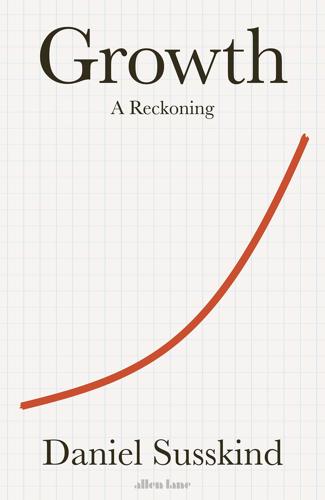
Growth: A Reckoning
by
Daniel Susskind
Published 16 Apr 2024
See also Tim Rogan, The Moral Economists (Oxford: Princeton University Press, 2017). 30 ‘300 to 600’ in Pinker, Enlightenment, p. 260; ‘40,000 to 50,000’ in www.marketwatch.com/story/grocery-stores-carry-40000-more-items-than-they-did-in-the-1990s-2017-06-07. 31 ourworldindata.org/books. 32 Fogel, The Escape from Hunger and Premature Death, p. 70. 33 ourworldindata.org/books. 34 www.gapminder.org/videos/hans-rosling-and-the-magic-washing-machine/http://www.gapminder.org/videos/hans-rosling-and-the-magic-washing-machine/. 35 A standard bulb emits about 1,700 lumens, so about 588 hours or about 25 days if it is on all the time; 50 days if it is on for half the day. 36 Roger Fouquet and Peter Pearson, ‘The Long Run Demand for Lighting: Elasticities and Rebound Effects in Different Phases of Economic Development’, Economics of Energy & Environmental Policy, 1:1 (2012), p. 88. 37 See Pinker, Enlightenment, p. 253, Roger Fouquet, ‘Divergences in Long-Run Trends in the Price of Energy and Energy Supplies’, Review of Enviromental Economics and Policy, 5:2 (2011), 196–218; Fouquet and Pearson, ‘The Long Run Demand’, and Max Roser and Hannah Ritchie, ‘Light at Night,’ Our World in Data website, https://ourworldindata.org/light-at-night. 38 Tyler Cowen, Stubborn Attachments (Stripe Press, 2018). 39 See Richard Easterlin, ‘Does Money Buy Happiness?’
…
In 1880, the majority of discretionary time (i.e., time not sleeping, eating or in ‘essential hygiene’) was spent ‘earning a living’; today, the majority of it is spent ‘doing what we like’.32 An important part of this reversal is the decline of housework, a long-standing source of unpaid drudgery, particularly for women. In the US, for example, time spent on housework fell from fifty-eight hours a week in 1900 to only fifteen-and-a-half hours a week in 2011. The domestic technologies that accompanied economic growth were responsible for this collapse. The data scientist Hans Rosling was on to something when he described the washing machine as being the most important invention of the Industrial Revolution – though vacuum cleaners, fridge freezers, microwaves and dishwashers are credible contenders for that title as well.34 Figure 3: Number of new book titles per million population, UK33 Implicit in Rosling’s quip is a bigger idea: that while certain glamorous technologies, from the steam engine to computers, have become conspicuous symbols of economic progress, many of the inventions that have changed our lives the most from a practical point of view are comparatively mundane.
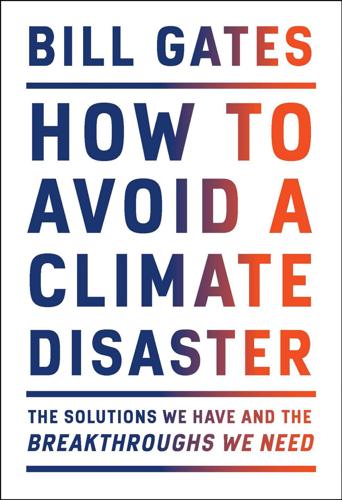
How to Avoid a Climate Disaster: The Solutions We Have and the Breakthroughs We Need
by
Bill Gates
Published 16 Feb 2021
As for the ideas you can’t support, you may feel compelled to speak out, and that’s understandable. But I hope you’ll spend more time and energy supporting whatever you’re in favor of than opposing whatever you’re against. With the threat of climate change upon us, it can be hard to be hopeful about the future. But as my friend Hans Rosling, the late global health advocate and educator, wrote in his amazing book Factfulness: “When we have a fact-based worldview, we can see that the world is not as bad as it seems—and we can see what we have to do to keep making it better.” When we have a fact-based view of climate change, we can see that we have some of the things we need to avoid a climate disaster, but not all of them.
…
Chapter 11: A Plan for Getting to Zero The project took 13 years: Human Genome Project Information Archive, “Potential Benefits of HGP Research,” web.ornl.gov. An independent study: Simon Tripp and Martin Grueber, “Economic Impact of the Human Genome Project,” Battelle Memorial Institute, www.battelle.org. Chapter 12: What Each of Us Can Do “When we have a fact-based worldview”: Hans Rosling, Factfulness: Ten Reasons We’re Wrong About the World—and Why Things Are Better than You Think, with Ola Rosling and Anna Rosling Rönnlund (New York: Flatiron Books, 2018), 255. Afterword: Climate Change and COVID-19 Black people and Latinx people: “Race, Ethnicity, and Age Trends in Persons Who Died from COVID-19—United States, May–August 2020,” U.S.
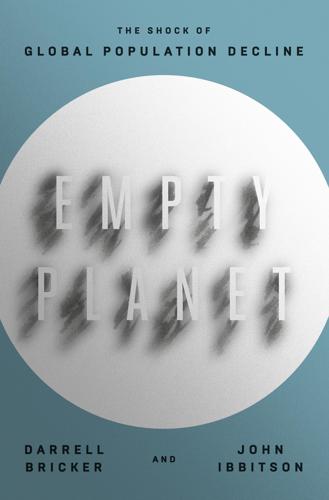
Empty Planet: The Shock of Global Population Decline
by
Darrell Bricker
and
John Ibbitson
Published 5 Feb 2019
The Economist is also skeptical of the UN estimates: previous projections, it observed in a 2014 analysis, failed to forecast “the spectacular declines in fertility in Bangladesh or Iran since 1980 (in both countries, from roughly six children per woman to about two now). At the moment, Africa is the source of much new population growth and the authors assume that fertility rates will continue to fall more slowly there than they did in Asia and Latin America. But no one can be sure.”82 The Swedish statistician Hans Rosling founded the Gapminder Institute to spread knowledge of great demographic shifts underway using language the general public can understand. In one popular video, “Don’t Panic,” he tells the audience that “mankind already is doing better than many of you think.”83 He talks about the convergence of birth rates and life expectancy between developed and developing countries, noting, “We no longer live in a divided world.”
…
All current and projected population and fertility data in this book is drawn from this source unless otherwise noted. 80 Wolfgang Lutz interview with Darrell Bricker, 15 April 2016. 81 Tedx Talks, “We Won’t Be Nine Billion: Jørgen Randers at TEDx Maastricht,” YouTube, 11 May 2014. https://www.youtube.com/watch?v=73X8R9NrX3w 82 “Don’t Panic,” Economist, 24 September 2014. 83 Gapminder Foundation, “Don’t Panic: Hans Rosling Showing the Facts About Population,” YouTube, 15 December, 2014. https://www.youtube.com/watch?v=FACK2knC08E 84 “World Population to Peak by 2055: Report,” cnbc, 9 September 2013. http://www.cnbc.com/id/101018722 85 “The Astounding Drop in Global Fertility Rates Between 1970 and 2014,” Brilliant Maps, 23 June 2015. http://brilliantmaps.com/fertility-rates 86 “Margaret Sanger’s the Woman Rebel—One Hundred Years Old,” Margaret Sanger Papers Project (New York: New York University, 2014). https://sangerpapers.wordpress.com/2014/03/20/margaret-sangers-the -woman-rebel-100-years-old 87 OECD Health Statistics 2014: How Does Spain Compare?

More: The 10,000-Year Rise of the World Economy
by
Philip Coggan
Published 6 Feb 2020
In 1970, US per capita income was 20 times that of China; by 2010, the ratio was only 4.11 Of course, there are still too many people dying too early, and too many living in extreme poverty, or close to it. But things have in general been getting better. In the book he wrote with his son and daughter-in-law, the late Hans Rosling described 13 questions he often asked at global conferences.12 Most people were too pessimistic in their answers, not realising, for example, that 60% of girls in low-income countries now finish primary school, 80% of children have been vaccinated, and 80% of people have access to electricity.
…
“Worst tech predictions of all time”, The Daily Telegraph, June 29th 2017, https://www.telegraph.co.uk/technology/0/worst-tech-predictions-of-all-time/thomas-watson-ibm-president-in-1943/ 7. Vaclav Smil, Energy and Civilization: A History 8. https://www.tudorsociety.com/childbirth-in-medieval-and-tudor-times-by-sarah-bryson 9. Steven Pinker, Enlightenment Now: The Case for Reason, Science, Humanism and Progress 10. Hans Rosling, Ola Rosling and Anna Rosling Rönnlund, Factfulness: Ten Reasons We’re Wrong About the World – And Why Things Are Better Than You Think 11. Ibid.; the figures comes from a World Bank study by Martin Ravallion and Shaohua Chen 12. Joe Hasell and Max Roser, “Famines”, Our World in Data, https://ourworldindata.org/famines 13.
…
The Story of Land: A World History of Land Tenure and Agrarian Reform, Lincoln Institute of Land Policy, 1988 Prawdin, Michael The Mongol Empire: Its Rise and Legacy, George Allen & Unwin, 1967 Pye, Michael The Edge of the World: How the North Sea Made Us, Pegasus Books, 2016 Radelet, Steven: The Great Surge: The Ascent of the Developing World, Simon & Schuster, 2016 Razzell, Peter, and Spence, Christine “Social capital and the history of mortality in Britain”, International Journal of Epidemiology, vol. 34, no. 2, 2005 Read, Charles “British economic policy and Ireland c. 1841–1845”, unpublished University of Cambridge PhD thesis, 2017 Reid, Michael Forgotten Continent: The Battle for Latin America’s Soul, Yale University Press, 2007 Rhodes, Richard Energy: A Human History, Simon & Schuster, 2018 Romer, Paul “Increasing returns and long-term growth”, Journal of Political Economy, vol. 94, no. 5, 1986 Ronson, Jon So You’ve Been Publicly Shamed, Picador, 2015 Rosenberg, Nathan Exploring the Black Box: Technology, Economics, and History, Cambridge University Press, 1994 Rosling, Hans, Rosling, Ola, and Rosling Rönnlund, Anna Factfulness: Ten Reasons We’re Wrong About the World – And Why Things Are Better Than You Think, Sceptre, 2018 Russell, Andrew L. “Standardization in history: a review essay with an eye to the future”, Johns Hopkins University, http://arussell.org/papers/futuregeneration-russell.pdf Sampson, Anthony The Seven Sisters: The Great Oil Companies and the World They Made, Hodder & Stoughton, 1975 Scheidel, Walter The Great Leveler: Violence and the History of Inequality from the Stone Age to the Twenty-First Century, Princeton University Press, 2017 Schofer, Evan, and Meyer, John W.
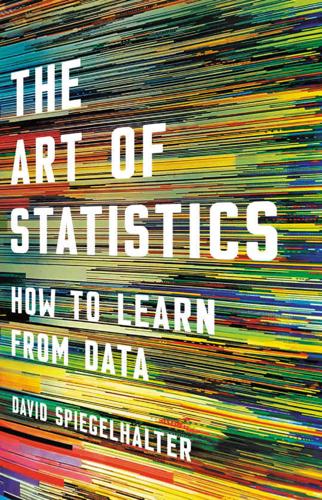
The Art of Statistics: How to Learn From Data
by
David Spiegelhalter
Published 2 Sep 2019
Figure 2.10 Infographic based on data from the third UK National Survey of Sexual Attitudes and Lifestyles (Natsal-3)—the lesson from the data is pointed out both visually and verbally. Even more advanced are dynamic graphics, in which movement can be used to reveal patterns in the changes over time. The master of this technique was Hans Rosling, whose TED talks and videos set a new standard of storytelling with statistics, for example by showing the relationship between changing wealth and health through the animated movement of bubbles representing each country’s progress from 1800 to the present day. Rosling used his graphics to try to correct misconceptions about the distinction between ‘developed’ and ‘undeveloped’ countries, with the dynamic plots revealing that, over time, almost all countries moved steadily along a common path towards greater health and prosperity.*9 This chapter has demonstrated a continuum from simple descriptions and plots of raw data, through to complex examples of storytelling with statistics.
…
World Health Organization. Q&A on the carcinogenicity of the consumption of red meat and processed meat is at http://www.who.int/features/qa/cancer-red-meat/en/. ‘Bacon, Ham and Sausages Have the Same Cancer Risk as Cigarettes Warn Experts’, Daily Record, 23 October 2015. 5. This was a favourite observation of Hans Rosling—see next chapter. 6. E. A. Akl et al., ‘Using Alternative Statistical Formats for Presenting Risks and Risk Reductions’, Cochrane Database of Systematic Reviews 3 (2011). 7. ‘Statins Can Weaken Muscles and Joints: Cholesterol Drug Raises Risk of Problems by up to 20 per cent’, Mail Online, 3 June 2013.
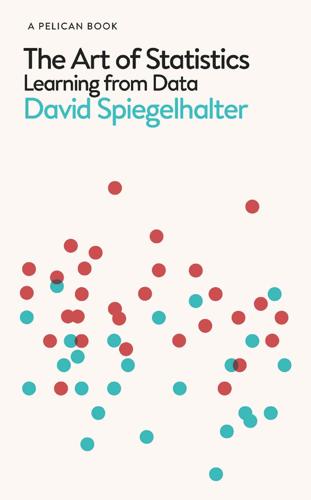
The Art of Statistics: Learning From Data
by
David Spiegelhalter
Published 14 Oct 2019
Figure 2.10 Infographic based on data from the third UK National Survey of Sexual Attitudes and Lifestyles (Natsal-3) – the lesson from the data is pointed out both visually and verbally. Even more advanced are dynamic graphics, in which movement can be used to reveal patterns in the changes over time. The master of this technique was Hans Rosling, whose TED talks and videos set a new standard of storytelling with statistics, for example by showing the relationship between changing wealth and health through the animated movement of bubbles representing each country’s progress from 1800 to the present day. Rosling used his graphics to try to correct misconceptions about the distinction between ‘developed’ and ‘undeveloped’ countries, with the dynamic plots revealing that, over time, almost all countries moved steadily along a common path towards greater health and prosperity.fn149 This chapter has demonstrated a continuum from simple descriptions and plots of raw data, through to complex examples of storytelling with statistics.
…
World Health Organization. Q&A on the carcinogenicity of the consumption of red meat and processed meat is at http://www.who.int/features/qa/cancer-red-meat/en/. ‘Bacon, Ham and Sausages Have the Same Cancer Risk as Cigarettes Warn Experts’, Daily Record, 23 October 2015. 5. This was a favourite observation of Hans Rosling – see next chapter. 6. E. A. Akl et al., ‘Using Alternative Statistical Formats for Presenting Risks and Risk Reductions’, Cochrane Database of Systematic Reviews 3 (2011). 7. ‘Statins Can Weaken Muscles and Joints: Cholesterol Drug Raises Risk of Problems by up to 20 per cent’, Mail Online, 3 June 2013.
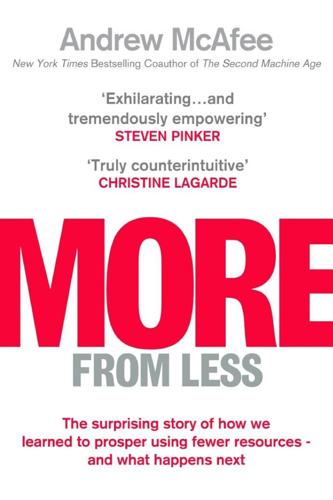
More From Less: The Surprising Story of How We Learned to Prosper Using Fewer Resources – and What Happens Next
by
Andrew McAfee
Published 30 Sep 2019
The first is that it contains a lot of valuable information. The second is that it tells an invaluable story—an optimistic and hopeful one. The evidence presented in Our World in Data and in books like Julian Simon’s The Ultimate Resource, Bjørn Lomborg’s Skeptical Environmentalist, Steven Pinker’s Enlightenment Now, and Hans Rosling’s Factfulness shows clearly that most of the things we should care about are getting better. Not all, but most. This happy fact applies both to the state of nature and the human condition. The Power of Negative Thinking But do your friends and family believe that a lot of important things are getting better?
…
By 2014, the figure had dropped to less than 15 percent: Max Roser and Esteban Ortiz-Ospina, “Global Rise of Education,” Our World in Data, August 31, 2016, https://ourworldindata.org/global-rise-of-education. Chapter 11: Getting So Much Better “But in online polls, in most countries, fewer than 10 percent of people knew this”: Hans Rosling, “Good News at Last: The World Isn’t as Horrific as You Think,” Guardian, April 11, 2018, https://www.theguardian.com/world/commentisfree/2018/apr/11/good-news-at-last-the-world-isnt-as-horrific-as-you-think. Across all countries surveyed in 2017, only 20 percent of people correctly answered: “Most of Us Are Wrong about How the World Has Changed (Especially Those Who Are Pessimistic about the Future),” Our World in Data, accessed March 25, 2019, https://ourworldindata.org/wrong-about-the-world.

MacroWikinomics: Rebooting Business and the World
by
Don Tapscott
and
Anthony D. Williams
Published 28 Sep 2010
Some changes, like the relationship between health and GDP, are so gradual that they’re nearly imperceptible to us. Animating nearly two hundred years’ worth of data depicting the relationship between infant mortality rates and GDP per capita in a forty-five-second clip is much more revealing than a static chart, says Professor Hans Rosling, the creator of Trendalyzer, a tool that allows users to turn spreadsheet data into rich, interactive visualizations on the Web.16 If you present the same data set without animation, just using “before” and “after” graphs, people somehow disbelieve it, says Rosling. These animations don’t tell a story: they’re “story busters,” because they correctly convey the richness and diversity of the data without oversimplifying.
…
Proenza, University of Akron; Jordan Raddick, Johns Hopkins University; Saad Rafi, Ontario Ministry of Energy and Infrastructure; Chris Rasmussen, U.S. National Geospatial-Intelligence Agency; Ben Rattray, Change.org; Michael Reinicke, Rideshare; Steve Ressler, GovLoop; David Rich, WRI; Ben Rigby, the Extraordinaries; Jay Rogers, Local Motors; Bruce Rogow, IT Odyssey; Mechthild Rohen, European Commission; Hans Rosling, Trendalyzer; Adam Roth-well, Intelligent Giving; John Gerard Ruggie, Harvard University; Charles Sabel, Columbia University; Rick Samans, World Economic Forum; Saskia Sassen, Columbia University; Kevin Schawinski, Yale University; Eric Schmidt, Google; Henrik Schuermann, CoreMedia; Brent Schulkin, Virgance; Klaus Schwab, WEF; Eddie Schwartz, Songwriters Association of Canada; Zuhairah Scott; Peggy Sheehy, Suffern Middle School; George Siemens, Connectivism; Anne Hojer Simonsen, Danish Ministry of Climate and Energy; Larry Smarr, Calit2; Marco Smit, Health 2.0; Kirsi Sormunen, Nokia; Dwayne Spradlin, InnoCentive; Soren Stamer, CoreMedia; Tom Steinberg, mySociety; Robert Stephens, Best Buy; Unity Stoakes, Organized Wisdom; Susanne Stormer, Novo Nordisk; Val Stoyanov, Cisco; Tomer Strolight, Torstar Digital; Anant Sudarshan, Stanford University; David Ticoll, author; Bill Tipton, HP; Michael Toffel, MapEcos; Linus Torvalds, Linux Foundation; Lena Trudeau, NAPA; Mike Turillo, Spencer Trask Collaborative Innovations; Wood Turner, Climate Counts; Gentry Underwood, IDEO; Jim Walker, Virtual Alabama; David Wheeler, CARMA; Dennis Whittle, Global Giving; John Wilbanks, Creative Commons; Sean Wise, VenCorps; Dave Witzel, Environmental Defense Fund; John Wonderlich, SunlightFoundation; Nicole Wong, Google; Jon Worren, MaRS; Doug Wright, RiffWorld; Nick Yee, Palo Alto Research Center; Jim Zemlin, Linux Foundation Thank you The title of the book came from a challenge we conducted online that showed there is indeed wisdom in crowds.
…
Nothhaft and David Kline, “The Biggest Job Creator You Never Heard Of: The Patent Office,” Harvard Business Review Blog (May 6, 2010). 13. Liz Allen, “Your chance to participate in Patent review—Peer to Patent needs you,” Public Library of Science (November 11, 2007). 14. Tom Steinberg, Ed Mayo, “Digital Engagement”, The Power of Information Task Force (2007). 15. Ibid. 16. Professor Hans Rosling, “New insights on poverty and life around the world,” TED (March 2007). See: http://www.ted.com/talks/view/id/140. 17. “About,” MapEcos.org (accessed May 19, 2010). 18. In most countries, the public sector is encumbered by complex institutional legacies that encompass hundreds of separate departments across multiple levels of government.
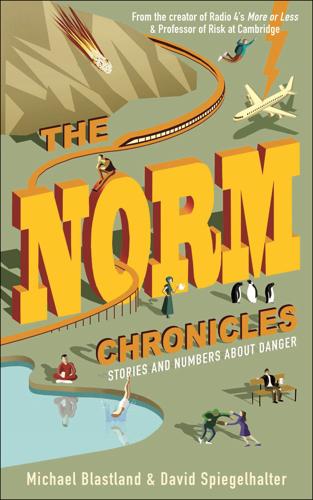
The Norm Chronicles
by
Michael Blastland
Published 14 Oct 2013
* Although infant mortality had fallen sharply up to 1921, it still accounted for a staggering 82 babies out of every 1,000 born in 1921. Then it dropped sharply in only a generation, to 46 in 1945. By 1983 it was down to 10, and it is about 4 now. * 2,000 is the capacity of the Empire cinema in London’s Leicester Square. * See Hans Rosling’s Gapminder project (www.gapminder.org) for brilliant demonstrations of this. * A growing fear for children has been dated to the 1960s, with the emergence of battered child syndrome, followed by runaways and Halloween sadism in the late 1960s, sexual abuse, child pornography and child-snatching in the 1970s and missing children and ritual satanic abuse in the 1980s.1 † Although there is a problem with this ‘rare is worse’ feeling.
…
But this only used around a third of cycles in which there had been any sex, and so a more sophisticated mathematical model was applied to the full data: they estimated the peak at two days before ovulation, with a chance of around 25 per cent, which is similar to previous estimates. The chances drop fairly steeply away from this peak, with an average of 5 per cent over the whole monthly cycle. * Hans Rosling’s Gapminder depicts the trends vividly.6 * See, for example, David Nutt1 for a vivid description of different views on illegal and legal drugs. * A recent example of drug liberalisation is the Licensing Act of 2003, which relaxed the rules on the opening hours of licensed premises, even allowing continuous opening for some premises, in England and Wales in 2005 (similar changes were introduced in Scotland in 2006)

Do Improvise: Less push. More pause. Better results. A new approach to work (and life) (Do Books)
by
Poynton, Robert
Published 14 May 2013
Using the Audience Requirements Grid is a way to keep you away from that edge. I don’t mean to say that the role of content in a presentation is irrelevant. Good slides can lift things and great material can, occasionally, carry the day. For example, there is a magnificent TED talk (see www.ted.com) by statistician Hans Rosling whose animated visualisation of data is stunning. But these animations were the result of decades of work. And, realising that there is more to presentations than good data, at the end, Rosling strips off to reveal a spandex vest and goes on to swallow a sword (or to be more accurate, a 19th-century Swedish infantry bayonet).
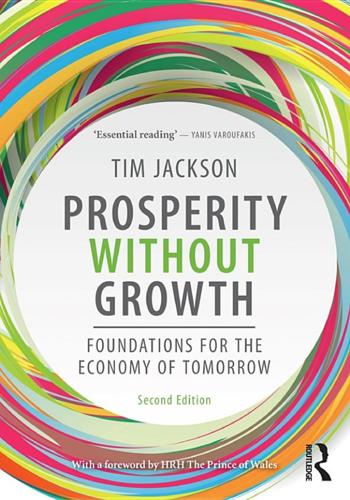
Prosperity Without Growth: Foundations for the Economy of Tomorrow
by
Tim Jackson
Published 8 Dec 2016
Mean years of schooling are taken from the Human Development Indicator database; GDP per capita from the World Development Indicators database (see Chapter 1, note 13). 22 There are some wonderful recent developments in this field of study, in particular Hans Rosling’s interactive GAPMINDER project, online at www.gapminder.org. See also Rosling’s TED talk, online at www.ted.com/talks/hans_rosling_shows_the_best_stats_you_ve_ever_seen (accessed 25 January 2016). 23 See Stuckler and Basu (2014) for a thorough exploration of the health implications of different responses to economic hardship. 24 Time series data on life expectancy for individual countries are from the World Development Indicators database (series SP.DYN.LE00.IN). 25 Franco et al. (2007: 1374). 26 Stuckler and Basu (2014: 108 et seq.). 27 In the conventional model, resources are often excluded from the equation and the main dependencies are thought to be on labour, capital and technological innovation. 28 Aggregate demand refers to the ‘expenditure’ formulation of the GDP, namely the sum of private and public consumption plus business investment.
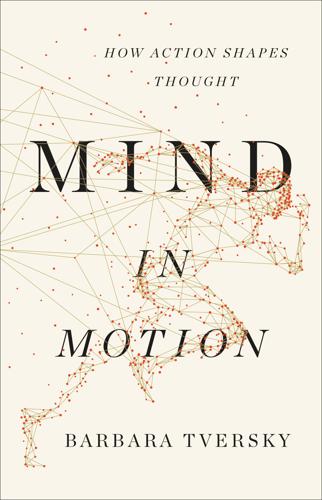
Mind in Motion: How Action Shapes Thought
by
Barbara Tversky
Published 20 May 2019
Yet thinking about subtle gradations along dimensions is much harder than lumping things into gross categories; there’s so much more that has to be considered and kept in mind. Categories are easier on the mind. But beware the First Law of Cognition, benefits come with costs. The beloved physician and professor of global health at the Karolinska Institute in Sweden, Hans Rosling, was dismayed by the many misconceptions people, even distinguished political and economic leaders of the world, had about the state of the world. His TED talk, telling the dramatic story of world economic development in recent times as if it were an ongoing tight soccer match, went viral. Many of the misconceptions that people held about economic and social development came from categorical thinking, especially dividing the world into rich and poor.
…
Palanquins transported nobility; commoners were transported on the shoulders or arms of family or in wheelbarrows or sleds. Horses, camels, donkeys, dogs, and reindeer took our premotorized ancestors farther distances than their feet could. Now strollers and wheelchairs and scooters and skates and planes and rockets do those jobs. Recall Hans Rosling’s work: the key to jumping up an economic level is moving farther in the world. At level one, you only have your feet. To get to level two, you need a bicycle; to get from level two to three, a motor scooter; to reach level four, an automobile. Moving farther in the world brings far more than economic opportunity.

Ageless: The New Science of Getting Older Without Getting Old
by
Andrew Steele
Published 24 Dec 2020
(American Psychological Association, 2011) ageless.link/ufntz3 … age-related diseases … around the world This was calculated using WHO GBD statistics. You can see the calculation at ageless.link/hbzze7 … surveys show … state of the world … Our general state of pessimism about the world – from life expectancy, to education, to vaccine provision – is captured beautifully by the brilliant Hans Rosling’s Ignorance Survey. Hans Rosling, ‘Highlights from ignorance survey in the UK’ (Gapminder Foundation, 2013) ageless.link/4qppjz … a breakthrough that changed scientific history Clive M. McCay, Mary F. Crowell and L. A. Maynard, ‘The effect of retarded growth upon the length of life span and upon the ultimate body size’, J.
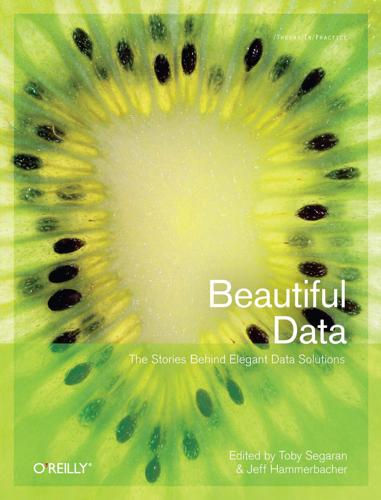
Beautiful Data: The Stories Behind Elegant Data Solutions
by
Toby Segaran
and
Jeff Hammerbacher
Published 1 Jul 2009
At the research level, articles in political science journals are starting to make use of graphical techniques for discovery and presentation of results. And online tools ranging from NationMaster.com to the Name Voyager (http://www. babynamewizard.com/voyager) are becoming increasingly accessible, with data dumps such as Hans Rosling’s TED talk (http://www.ted.com/index.php/talks/hans_rosling_shows_the_best_ stats_you_ve_ever_seen.html) becoming cult favorites. We expect statistical visualization to become more important and more widespread in political analysis. References Bertin, J. (1967). Semiology of Graphics. Translated by W. J. Berg (1983). Madison: University of Wisconsin Press.

Grand Transitions: How the Modern World Was Made
by
Vaclav Smil
Published 2 Mar 2021
The first, a relatively restrained version of these views, is one of an ever-better world, of promises that the coming generations will see many repeats of our recent accomplishments, replete with monotonously improving health, rising life expectancies, higher incomes, ever greater surfeits of food and energy, even more affordable mobility, and an even easier access to information—and all of that would be taking place with ever lower impact on the environment. This is the message of the two much acclaimed publications by Hans Rosling and Steven Pinker (Rosling et al. 2018; Pinker 2018). The authors have followed the same basic precept that I did in this book and in other writings since the year 2000 (most notably in Smil 2005, 2006, 2010a, 2013b, 2014, 2017a, and 2020). All of us have assessed many remarkable historic achievements and appraised the current state of modern civilization by focusing on facts and numbers, past and present.
…
All of us have pointed out many impressive quality-of-life gains and stunning technical accomplishments in order to explain—contrary to ubiquitous news headlines reporting on a variety of depressing problems and the writings about imminent peaks, downturns, and catastrophes—how so much has gone steadily and impressively better. In his Factfulness Hans Rosling (2018) argued that even well-informed people are getting “the basic facts about the world wrong,” that “the world is getting worse” is “the mega misconception,” that “things are better than you think.” Steven Pinker (2018, 77) admonished us to follow trend lines, not the headlines, and recited numerous quality-of-life gains ranging from longevity and reduction of poverty to the diffusion of democratic governance.

Without Their Permission: How the 21st Century Will Be Made, Not Managed
by
Alexis Ohanian
Published 30 Sep 2013
Forty-two slides—a good sign,3 even though it meant I had only a little more than four seconds for each slide. There was going to be a giant TED sign on the stage behind me. This could make or break my public speaking career. And I was going to be on the same stage where the brilliant statistician Hans Rosling, using beautiful data, emphatically demonstrated how India ascended to economic superpower status—meanwhile, I was going to talk about a whale named Mister Splashy Pants. No pressure. I finished before sunrise and took a power nap. When I awoke I began feverishly practicing with my timer. I missed all the morning talks.
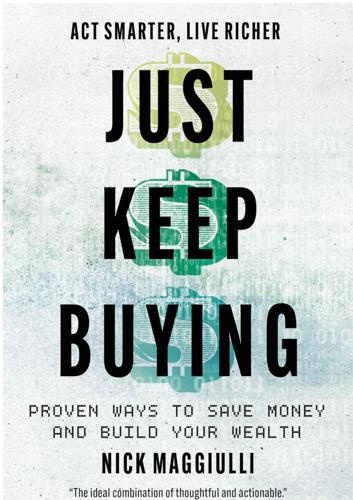
Just Keep Buying: Proven Ways to Save Money and Build Your Wealth
by
Nick Maggiulli
Published 15 May 2022
Heart size was a better predictor of horse racing ability than anything else. And this is what Seder knew when he convinced his buyer to purchase American Pharoah and disregard the other 151 horses at auction. The rest is history. Seder’s story highlights how deep insight can be gleaned from one useful data point. Hans Rosling echoes this sentiment in Factfulness when he discusses the importance of child mortality in understanding a country’s development: “Do you know I’m obsessed with the number for the child mortality rate?… Because children are very fragile. There are so many things that can kill them. When only 14 children die out of 1,000 in Malaysia, this means that the other 986 survive.

Bourgeois Dignity: Why Economics Can't Explain the Modern World
by
Deirdre N. McCloskey
Published 15 Nov 2011
For example, the lower end of the world’s present income distribution, the bottom billion out of seven, as Ó Gráda has documented, has seen a dramatic decline of famine.4 In the European Middle Ages a killing famine in the favored south of England came every ten years or so.5 The last widespread, killing famine in southern England was 1597, in northern England 1623, in Scotland the 1690s, in France 1710, in Germany, Scandinavia, and Switzerland 1770–1772, in Ireland the late 1840s, in Finland 1866–1868.6 The upper middle of the present-day seven billion—perhaps two billion, double the population of the world in 1800—live in countries in the mold of Greece or Taiwan or Israel. The average income of such places exceeds $80 a day, which is to say two and a half times the present world average, and twenty-six times the world average in 1800. Hans Rosling, a Swedish professor of public health, calls $80 “the Washing Line,” because at that level a household can have an electric washing machine, freeing women from exhausting wash days.7 Deborah Fallows reports on a study of material aspirations among the upper bourgeoisie in China: “In the 1950s and 1960s . . . a watch, a bicycle, and a sewing machine.
…
Italy in its legal system ranked sixty-third, just above Iran, and in its freedom from regulation ninety-fourth, just above the Dominican Republic.9 Italian legal institutions, the exercise of the monopoly of legitimate violence—its L variables and the S variables supporting the L—are wretched. Yet in real GDP per person New Zealand and Italy, in 2010, were nearly identical, at $88.20 and $86.80 a day, a little above Hans Rosling’s Washing Line. One could argue that there is anyway an international correlation between income and governance. But the causation is in part the other way around—rich people demand better governance, which is certainly the story of more honest governance in American cities, 1900 to the present.
…
Shils 1957, p. 490: the ex-Marxists “criticize the aesthetic qualities of a society which has realized so much of what socialists once claimed was of central importance, which has, in other words, overcome poverty and long arduous labor.” 13. Ehrlich 1968 (1975), p. xi. 14. If you disbelieve it, you need to listen to Hans Rosling’s astonishing video for the BBC, I say again: “Don’t Panic—The Facts about Population,” http://www.gapminder.org/videos/dont-panic-the-facts-about-population/. 15. Amazon.com reviews of Simon, The Ultimate Resource 2, accessed July 2013. 16. Eldridge 1995, p. 9. Such mistaken science comes from the English-language notion that the only “sciences” are physical and biological.
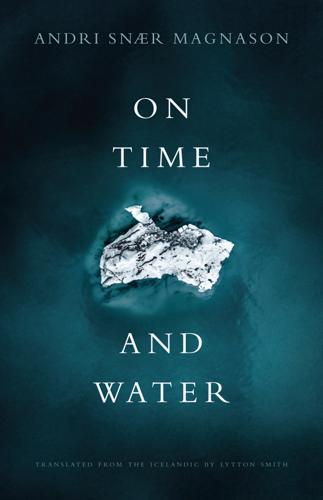
On Time and Water
by
Andri Snaer Magnason
Published 15 Sep 2021
,” https://informationisbeautiful.net/2010/planes-or-volcano. 46 Calculations based on the assumption that the Eyjafjallajökull emissions were 150,000 tons of CO2 per day, U.S. emissions amount to 5.4 gt and UK emissions to 400mt. Then methane and land use CO2 equivalents can be added. The calculations here focus on just the fire alone. 47 Global Warming of 1.5°C. IPCC 2018, www.ipcc.ch/sr15. 46. See: www.globalcarbonproject.org/. 48 Global Warming of 1.5°C. IPCC 2018, https://report.ipcc.ch/sr15. 49 Hans Rosling, Ola Rosling, and Anna Rosling Rönnlund, “Deaths in Wars.” Factfulness: Ten Reasons We’re Wrong About The World—And Why Things Are Better than You Think. 50 Cf. www.hagstofa.is/utgafur/frettasafn/umhverfi/losun-koltvisyrings-a-einstakling. 51 “Extreme Carbon Inequality,” Oxfam International, https://www-cdn.oxfam.org/s3fs-public/file_attachments/mb-extreme-carbon-inequality-021215-en.pdf. 52 Cf. http://www.loftslag.is/?
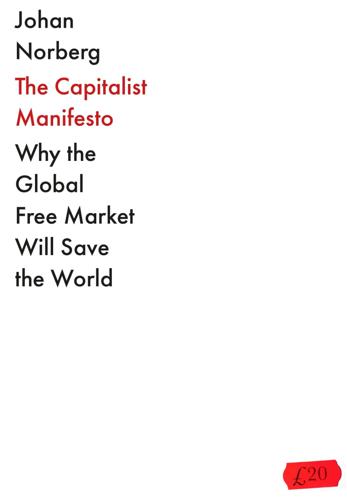
The Capitalist Manifesto
by
Johan Norberg
Published 14 Jun 2023
Or as Sweden’s archbishop summarized the state of the world: ‘our journey leads straight to hell’.2 In contrast, I talked about the strangely unheralded progress that I saw in poor countries that had begun to liberalize their economies, which now had better incomes, agricultural production, nutrition, health, vaccination and education. It was not easy to get such information back then. For some strange reason, tax-funded international organizations still preferred to keep secret the data they had collected. It was four years before Gapminder was founded and Hans Rosling began to fill the gaps in our knowledge about world progress in a fun and easily accessible way, and ten years before Max Roser started Our World in Data, which compiles an incredible amount of user-friendly statistics.3 But what I did find was enough to impress me and completely change the worldview I grew up with.

The Fourth Age: Smart Robots, Conscious Computers, and the Future of Humanity
by
Byron Reese
Published 23 Apr 2018
And culture is why we have William Shakespeare’s Romeo and Juliet, Ludwig van Beethoven’s “Ode to Joy,” Michelangelo Buonarroti’s Pietà, J. K. Rowling’s Harry Potter books, and Lin-Manuel Miranda’s Hamilton. We have come a long way on our pathway to civilization. Yet our journey is far from complete. As the Swedish doctor Hans Rosling said, “You have to be able to hold two ideas in your head at once: the world is getting better and it’s not good enough.” While it takes but a few moments to make a list of the appalling atrocities and injustices that plague our world, most generations do leave the world a little better of a place than they found it.
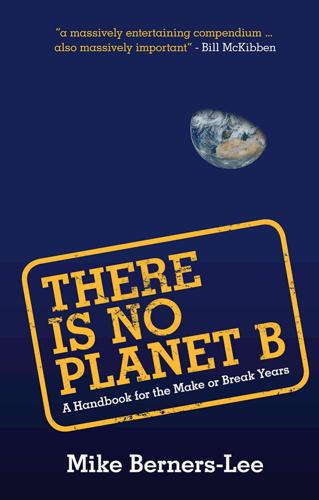
There Is No Planet B: A Handbook for the Make or Break Years
by
Mike Berners-Lee
Published 27 Feb 2019
We all recognise that happiness, meaning, and thriving depend on far more than material consumption.’ 22 BT’s procurement guidelines in regards to climate change can be found here: https://groupextranet.bt.com/selling2bt/ working/climateChange/default.html They also outline their environmental principles here: https://www.btplc.com/Purposefulbusiness/Ourapproach/ Ourpolicies/Environmental_Policy.pdf 6 People and Work 1 See, for example, the late Swedish statistician Hans Rosling’s entertaining and striking TED talks on population, health 268 NOTES TO PAGES 150–154 and wealth trends. Highly recommended, if you haven’t seen them already. Very sadly he died in 2017. https://tinyurl .com/roslinghans 2 Stewart Wallis, former head of the New Econmomics Foundation, and before that International Director of Oxfam, estimates that this alone can cut the fertility rate by a massive 60%, making it, in his view one of the world’s most critical investments on three simultaneous fronts: morally, socially and environmentally.

Green Swans: The Coming Boom in Regenerative Capitalism
by
John Elkington
Published 6 Apr 2020
Put another way, our society changed more in the last 50 years than at any other time in history. More startling, we changed more in the last 50 years than in the entirety of human existence.13 [Original author’s emphases.] There are commercially successful super optimists on the theme of where all of this is taking us. People like Steven Pinker and the late Hans Rosling have argued that we are living in the most peaceful times ever, statistically speaking. In the last hundred years, we have seen the average human life expectancy nearly doubled—indeed, as I wrote these words, my father was ninety-eight, my mother ninety-six. Such things do not go on forever, however.14 And the threat of the Anthropocene epoch is that our species, so successful in improving its own life expectancy and living conditions over a generation or two, may so disrupt the wider world that the very foundations of nature and civilization crack.

The Coming of Neo-Feudalism: A Warning to the Global Middle Class
by
Joel Kotkin
Published 11 May 2020
Ben Fowkes (New York: Vintage, 1957), vol. 1: 914–15; Karl Marx and Friedrich Engels, “The Manifesto of the Communist Party,” in The Essential Left (New York: Barnes & Noble, 1961), 15–17. 18 E. J. Hobsbawm, The Age of Revolution (New York: New American Library, 1962), 222. 19 Peter Lindert and Jeffrey Williamson, “Unequal gains: American growth and inequality since 1700,” Vox, CEPR Policy Portal, June 16, 2016, https://voxeu.org/article/american-growth-and-inequality-1700. 20 Hans Rosling, “Good news at last: the world isn’t as horrific as you think,” Guardian, April 11, 2018, https://www.theguardian.com/world/commentisfree/2018/apr/11/good-news-at-last-the-world-isnt-as-horrific-as-you-think; Homi Kharas and Kristofer Hamel, “A global tipping point: Half the world is now middle class or wealthier,” September 27, 2018, https://www.brookings.edu/blog/future-development/2018/09/27/a-global-tipping-point-half-the-world-is-now-middle-class-or-wealthier/?
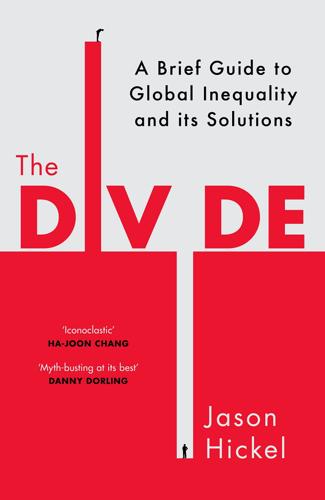
The Divide: A Brief Guide to Global Inequality and Its Solutions
by
Jason Hickel
Published 3 May 2017
That same year, Charles Kenny published Getting Better: Why Global Development is Succeeding, with a glowing foreword by Bill Gates. Gates himself published a public letter in 2014, opening with the words: ‘By almost any measure, the world is better than it has ever been.’ And the Swedish academic Hans Rosling continued to make his earnest presentations with shiny visual gimmicks illustrating how the plight of the poor keeps improving. Rosling’s TED Talk, ‘The Best Stats You’ve Ever Seen’, has been viewed more than 10 million times. The UN’s poverty-reduction figures quickly became some of the most repeated statistics in the world.
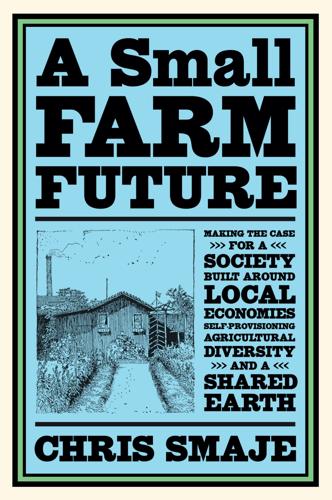
A Small Farm Future: Making the Case for a Society Built Around Local Economies, Self-Provisioning, Agricultural Diversity and a Shared Earth
by
Chris Smaje
Published 14 Aug 2020
Benanav 2019; Sayer 2016, 5; Streeck 2016. 125. Klein 2001, 87; Streeck 2016. 126. For example, Ploeg 2008. 127. Pinker 2018, 364. 128. WDI n.d. 129. Suwandi 2019. 130. A plot of GDP per capita for each country without aggregation suggests an inflection point around the top fifty countries or so. My comments here directly contradict Hans Rosling’s assertion that there is no longer a gap between the rich, old Western world and the larger part of the rest: Rosling 2018, 28. 131. WDI n.d. 132. Parenti 2011, 241–2. 133. Vinten-Johanson et al. 2003, 256. 134. WDI n.d. 135. Hickel 2017; Milanovic 2016. 136. UN DESA (2017) ‘Development Issues #10: International Financial Flows and External Debt,’ 24 March, https://www.un.org/development/desa/dpad/publication/development-issues-no-10-international-financial-flows-and-external-debt/. 137.

Whole Earth Discipline: An Ecopragmatist Manifesto
by
Stewart Brand
Published 15 Mar 2009
The “rise of the West” is over. The world looks the way it did a thousand years ago, when the ten largest cities were Córdoba, in Spain; Kaifeng, in China; Constantinople; Angkor, in Cambodia; Kyoto; Cairo; Baghdad; Nishapur, in Iran; Al-Hasa, in Saudi Arabia; and Patan, in India. As Swedish statistician Hans Rosling says, “The world will be normal again; it will be an Asian world, as it always was except for these last thousand years. They are working like hell to make that happen, whereas we are consuming like hell.” • It may be distracting, though, to focus just on the world’s twenty-four megacities—those with a population over 10 million.

Geek Heresy: Rescuing Social Change From the Cult of Technology
by
Kentaro Toyama
Published 25 May 2015
Additionally, my writing benefited from conversations and other forms of support from many, many people: Debbie Apsley, Özlem Ayduk, Marika Arcese, Siva Athreya, Garima Bhatia, Chris Blattman, Peter Blomquist, Maurizio Bricola, Jenna Burrell, Suvojit Chattopadhyay, Deepti Chittamuru, Magdalena Claro, Josh Cohen, Kristina Cordero, David Daballen, Kristen Dailey, John Danner, Ankhi Das, Alain de Janvry, Thad Dunning, Paolo Ficarelli, Greg Fischer, Bablu Ganguly, Maria Gargiulo, Achintya Ghosh, Rachel Glennerster, Richa Govil, Jürgen Hagmann, Naomi Handa-Williams, Saskia Harmsen, Gaël Hernández, Melissa Ho, Shanti Jayanthasri, Rob Jensen, Ashok Jhunjhunwala, Joseph Joy, Pritam Kabe, Ken Keniston, Neelima Khetan, Jessica Kiessel, Michael Kremer, Ramchandar Krishnamurthy, Antony Lekoitip, Miep Lenoir, Julia Lowe, Jeff MacKie-Mason, Drew McDermott, Patricia Mecheal, Pavithra Mehta, Ted Miguel, Eduardo Monge, Rohan Murty, Miguel Nussbaum, Chip Owen, Tapan Parikh, Paul Polak, Madhavi Raj, Ranjeet Ranade, Gautam Rao, Eric Ringger, Hans Rosling, Elisabeth Sadoulet, Maximiliano Santa Cruz Scantlebury, Jonathan Scanlon, Denise Senmartin, Jahanzeb Sherwani, Priyanka Singh, Pratima Stanton, Rick Szeliski, Steve Toben, Mike Trucano, Avinash Upadhyay, Dipti Vaghela, Suzanne van der Velden, Srikant Vasan, Wayan Vota, Terry Winograd, Christian Witt, Renee Wittemeyer, and Naa Lamle Wulff.

Giving the Devil His Due: Reflections of a Scientific Humanist
by
Michael Shermer
Published 8 Apr 2020
Martin Luther King, Jr. delivered what, in the fullness of time, would become his most memorable vision from his 1963 magisterial “I Have a Dream” speech, he could not have known how much progress in civil rights would ensue over the coming half-century, in no small measure because of his work. Human progress in general, and moral advancement in particular, have been documented in detail in a number of recent books, including Hans Rosling’s Factfulness (2018, Flatiron Books), Yuval Noah Harari’s 21 Lessons for the 21st Century (2018, Spiegel & Grau), Steven Pinker’s Enlightenment Now (2018, Penguin) and The Better Angels of Our Nature (2011, Penguin), Greg Easterbrook’s It’s Better Than it Looks (2018, PublicAffairs), Johan Norberg’s Progress (2017, OneWorld), my own The Moral Arc (2015, Henry Holt), and Matt Ridley’s The Rational Optimist (2010, HarperCollins).
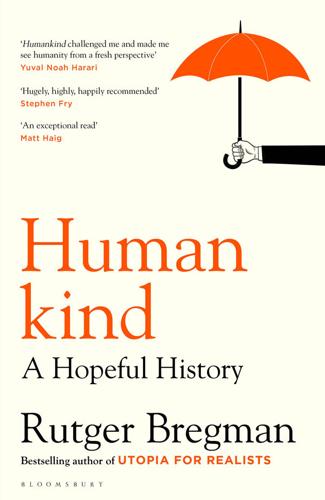
Humankind: A Hopeful History
by
Rutger Bregman
Published 1 Jun 2020
Snow, ‘Science and Government’, The Godkin Lectures (1960). 2David Hume, ‘Of the Independency of Parliament’, in Essays, Moral, Political, and Literary (1758, Part 1). 3See the famous poem by Bernard Mandeville ‘The Grumbling Hive: Or, Knaves turn’d Honest’, The Fable of The Bees: or, Private Vices, Public Benefits (1714). 4Marshall Sahlins, The Western Illusion of Human Nature (Chicago, 2008), pp. 72–6. 5His Holiness Pope Francis, ‘Why the Only Future Worth Building Includes Everyone’, TED Talks (April 2017). 6Ara Norenzayan, Big Gods (Princeton, 2013), p. 75. 7If you don’t believe it, this will set you straight: Hans Rosling, Factfulness. Ten Reasons We’re Wrong About the World – and Why Things Are Better Than You Think (New York, 2018). 8For an overview, see the first chapter of my previous book Utopia for Realists (London, 2017). 9See, for example, Zygmunt Bauman, Modernity and the Holocaust (Ithaca, 1989), and Roger Griffin, Modernism and Fascism.

The Rational Optimist: How Prosperity Evolves
by
Matt Ridley
Published 17 May 2010
Changes in the Process of Aging during the Twentieth Century: Findings and Procedures of the Early Indicators Project. NBER Working Papers 9941, National Bureau of Economic Research. p. 19 ‘Yet the global effect of the growth of China and India has been to reduce the difference between rich and poor worldwide.’ This is especially clear in Hans Rosling’s animated graphs of global income distribution at www.gapminder.com. Incidentally, the individualisation of life that brought personal freedom after the 1960s also brought less loyalty towards the group, a process that surely reached crisis point in the bonus rows of 2009: see Lindsey, B. 2009.

Radical Uncertainty: Decision-Making for an Unknowable Future
by
Mervyn King
and
John Kay
Published 5 Mar 2020
A survey in 2016 across twenty-six countries showed that 84% of respondents believed that extreme poverty in the world had risen or remained the same. 10 But extreme poverty has fallen by more than half in the last two decades, benefiting more than a billion people. 11 This may be the single most important fact about the global economy over the period. In his bestselling Factfulness , Hans Rosling has reported that such ignorance was even widespread in India and China, whose rapid economic growth has been responsible for much of the improvement. 12 College students did a little better than the population as a whole. But we are concerned that modern economics teaching puts emphasis on quantitative methods without giving students the opportunity to learn much either about data sources or about the principles by which data are compiled.
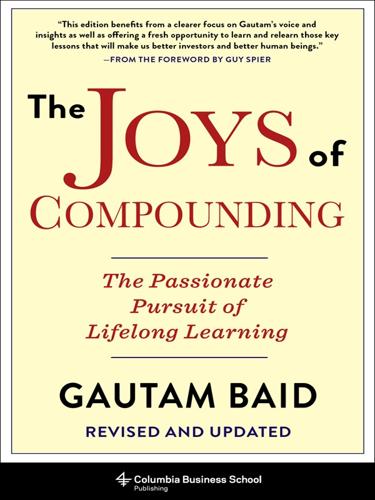
The Joys of Compounding: The Passionate Pursuit of Lifelong Learning, Revised and Updated
by
Gautam Baid
Published 1 Jun 2020
Richard Feynman taught me the difference between knowing the name of something and knowing something. Seneca, Aurelius, Epictetus, and Ryan Holiday enlightened me on the virtues of stoicism and of being in control of our personal reaction to any event in our lives. Will Durant, Ariel Durant, and Yuval Noah Harari educated me on the history of human civilization. Steven Pinker and Hans Rosling instilled great optimism in me about the constant, ongoing improvements in our world on a daily basis. My life truly epitomizes Isaac Newton’s saying: “If I have seen further, it is by standing upon the shoulders of giants.” The Joys of Compounding is my heartfelt tribute to all of my teachers who helped me achieve financial independence, become a better and wiser person, and embark on the path to a fulfilling and meaningful life.

The Singularity Is Nearer: When We Merge with AI
by
Ray Kurzweil
Published 25 Jun 2024
BACK TO NOTE REFERENCE 113 For some clear and compelling summaries and visualizations of the global development and industrialization process, see Council on Foreign Relations, “Global Development Explained | World101,” CFR Education, YouTube video, June 18, 2019, https://www.youtube.com/watch?v=Po0o3Gk9FPQ; “Hans Rosling’s 200 Countries, 200 Years, 4 Minutes—the Joy of Stats—BBC Four,” BBC, YouTube video, November 26, 2010, https://www.youtube.com/watch?v=jbkSRLYSojo; “The History of International Development | Max Roser | EAGxOxford 2016,” Centre for Effective Altruism, YouTube video, April 16, 2017, https://www.youtube.com/watch?

Adaptive Markets: Financial Evolution at the Speed of Thought
by
Andrew W. Lo
Published 3 Apr 2017
These activities necessarily increase the required scale of financial markets, as well as the complexity of the interactions among the various counterparties. We’ve reshaped the world into a far different place. A compelling illustration of this difference can be seen in the pair of graphs in figure 8.3 (in the color section) using the Swedish demographer Hans Rosling’s excellent Gapminder data visualization tools. These two graphs display measures of health and wealth—the average life expectancy and per capita gross domestic product (GDP)—for various countries around the world in 1900 and 2013. Each country is a circle and the size is proportional to its population.

Architects of Intelligence
by
Martin Ford
Published 16 Nov 2018
We need to make very serious contemplations, which does not mean that we’re not going to have moral ethics; it does. It just means that it needs to be balanced to realize that we are in a tough spot. For example, there’s a couple of books that have come out, like Factfulness: Ten Reasons We’re Wrong About the World, and Why Things Are Better Than You Think, by Hans Rosling, and Steven Pinker’s The Better Angels of Our Nature: Why Violence Has Declined. Those books basically say that the world’s not bad, and that although everyone says how terrible it is, all the data says it’s getting better, and it’s getting better faster. What they’re not contemplating is that the future is dramatically different to the past.

Slouching Towards Utopia: An Economic History of the Twentieth Century
by
J. Bradford Delong
Published 6 Apr 2020
Also seeing a “long” twentieth century as most useful is the keen-sighted and learned Ivan Berend in An Economic History of Twentieth-Century Europe: Economic Regimes from Laissez-Faire to Globalization, Cambridge: Cambridge University Press, 2006. 4. Friedrich A. von Hayek, “The Use of Knowledge in Society,” American Economic Review 35, no. 4 (September 1945): 519–530. 5. Hans Rosling et al., Gapminder, http://gapminder.org; “Globalization over Five Centuries, World,” Our World in Data, https://ourworldindata.org/grapher/globalization-over-5-centuries?country=~OWID_WRL. 6. Karl Marx and Friedrich Engels, Manifesto of the Communist Party, London: Communist League, 1848; Jonathan Sperber, Karl Marx: A Nineteenth-Century Life, New York: Liveright, 2013; Marshall Berman, All That Is Solid Melts into Air: The Experience of Modernity, New York: Verso, 1983. 7.